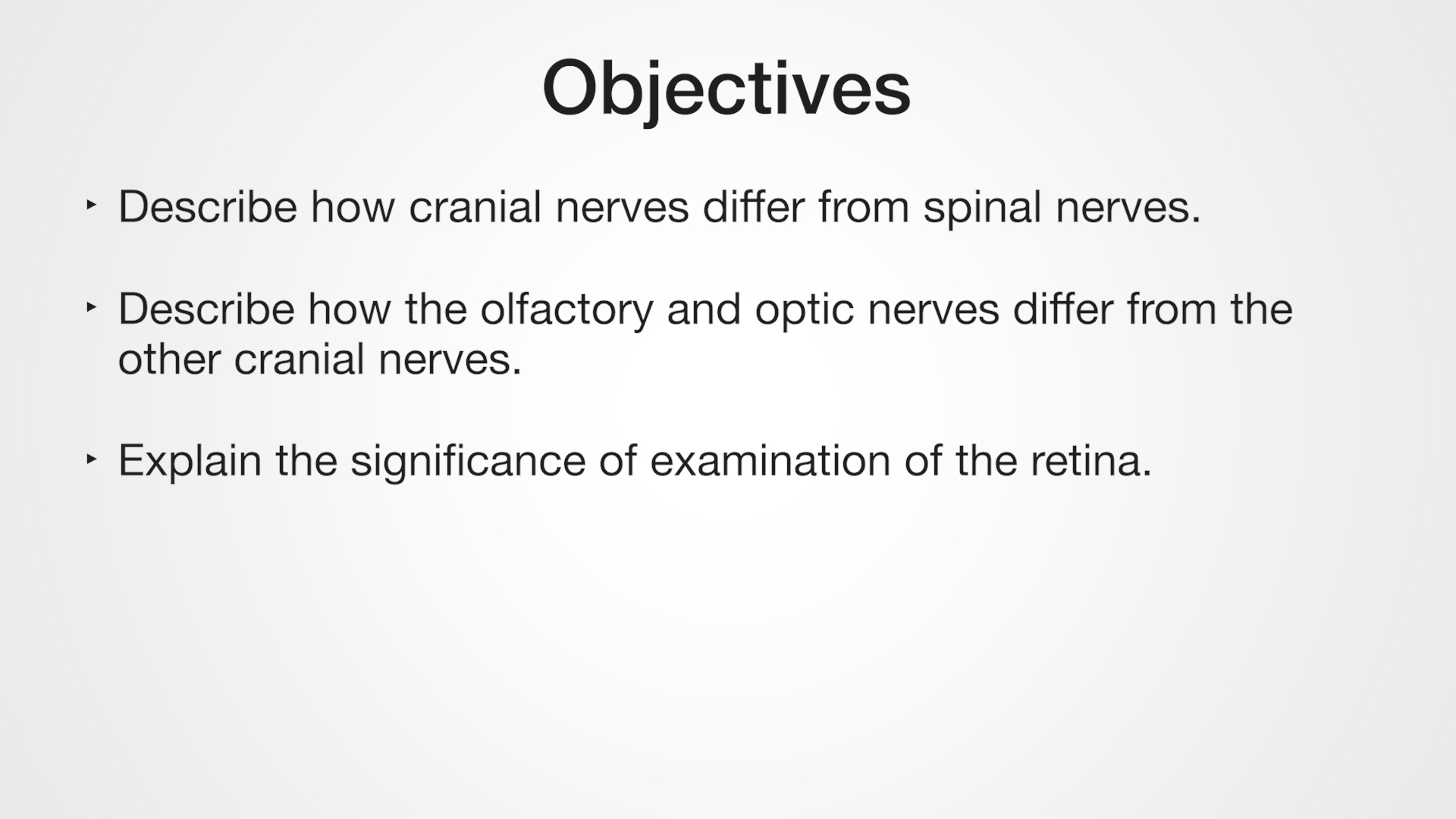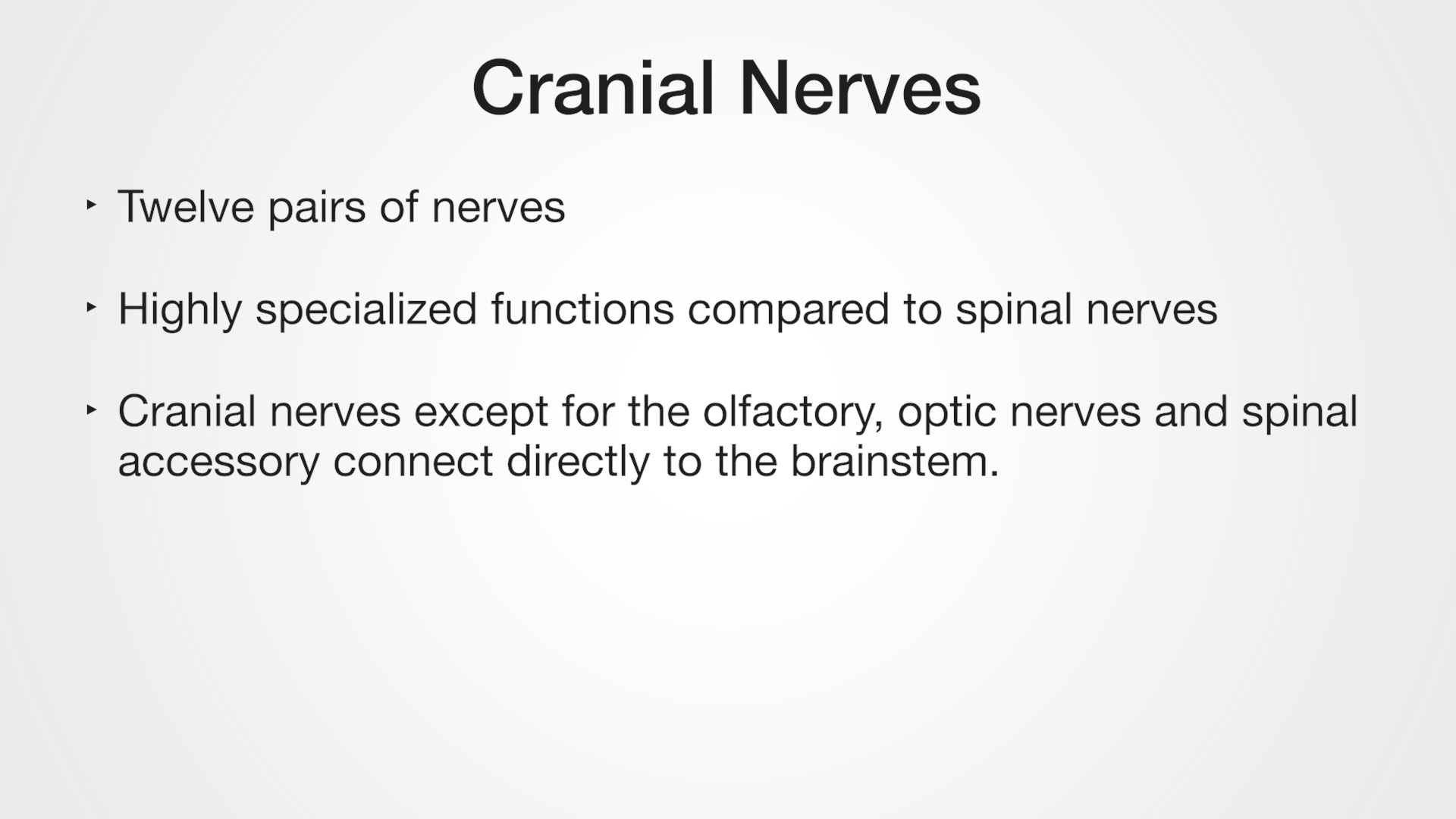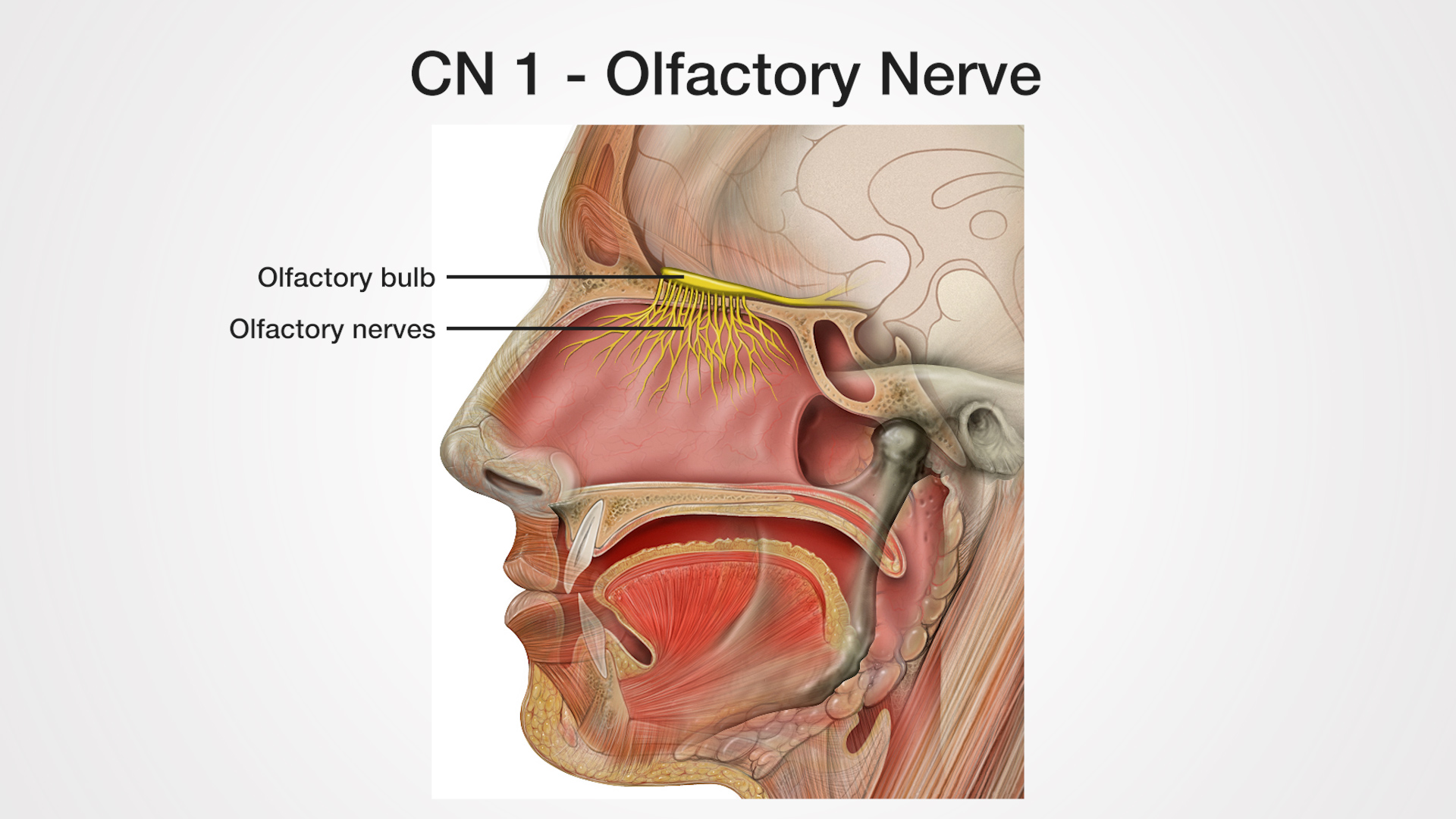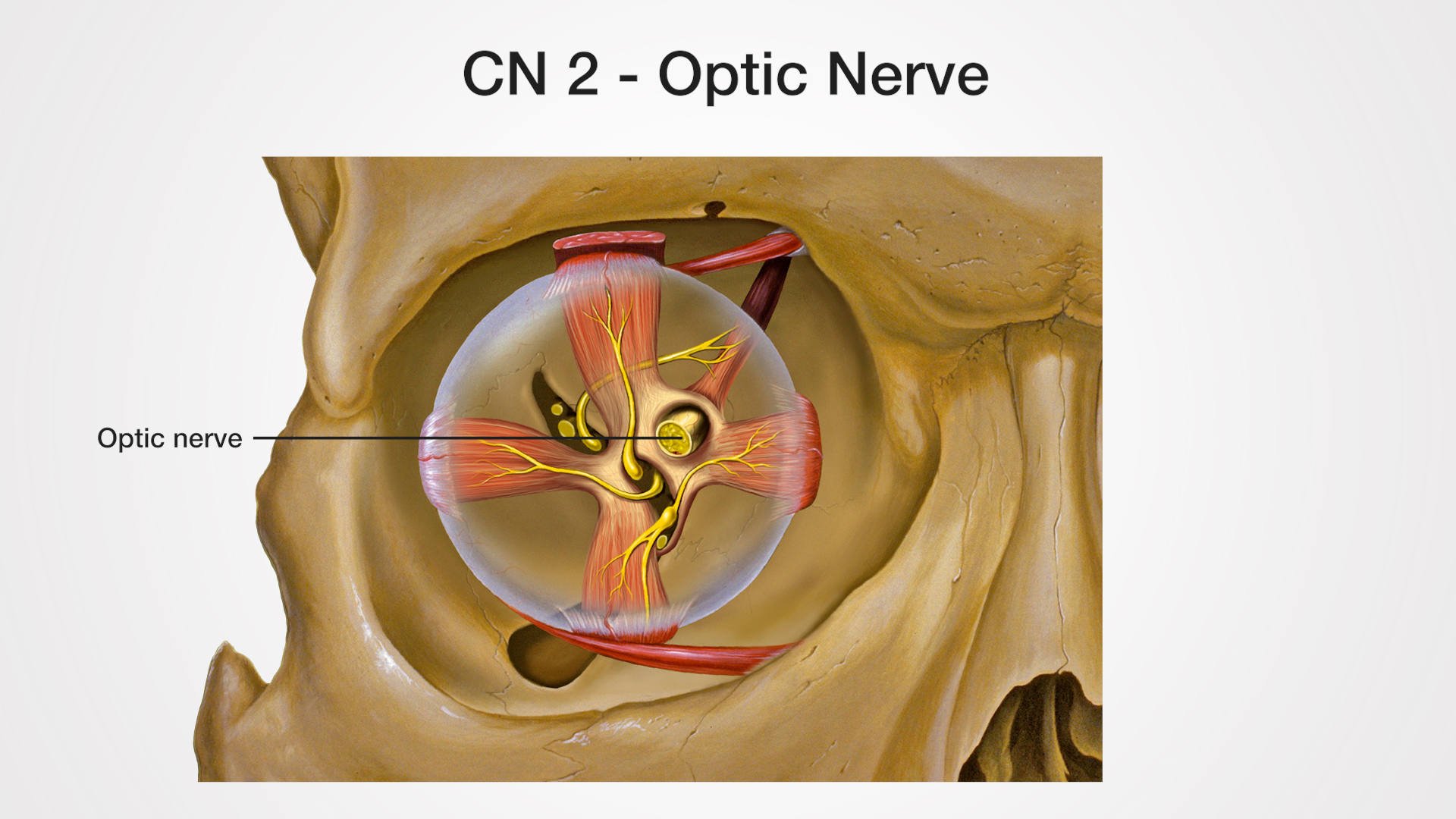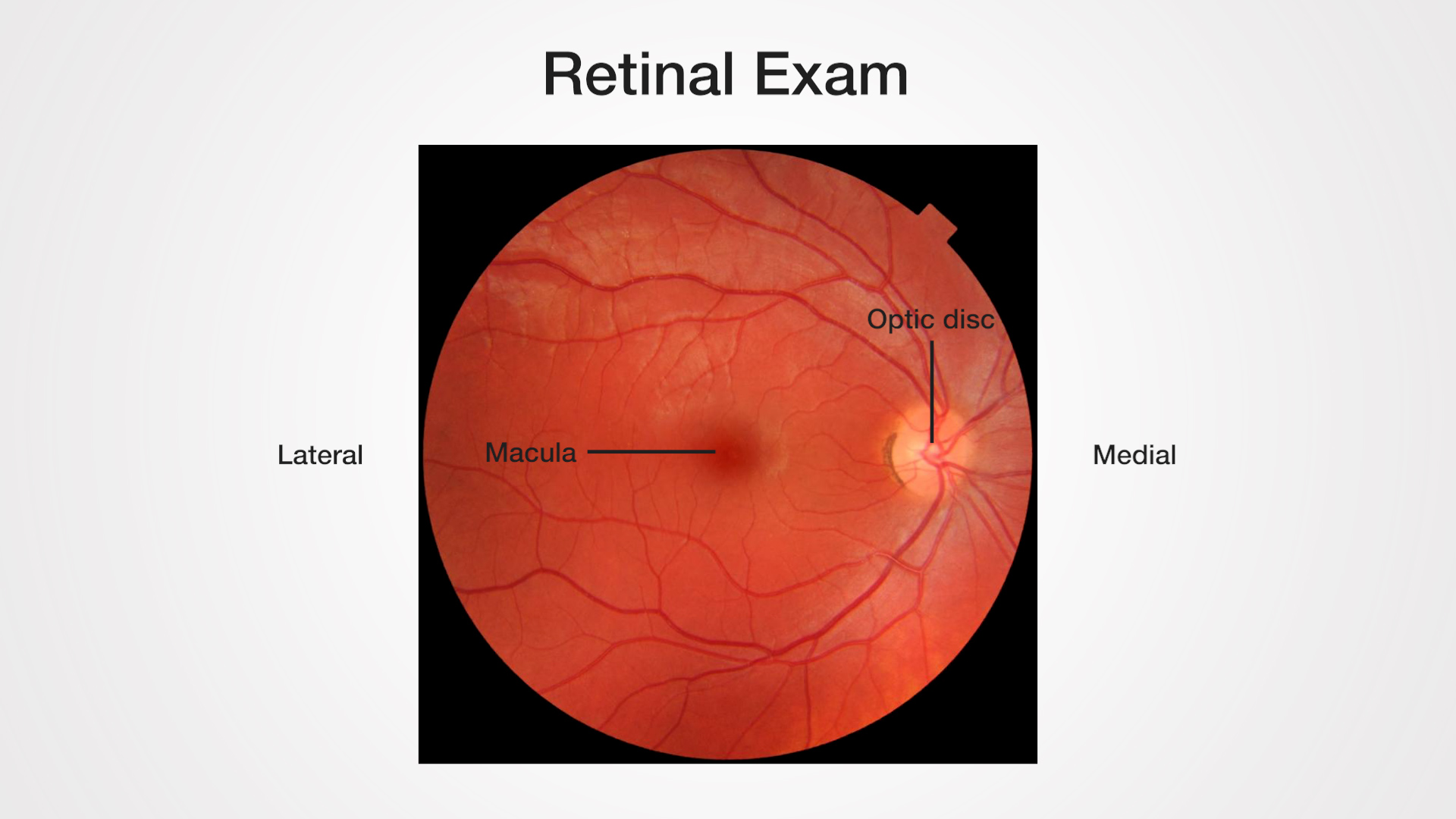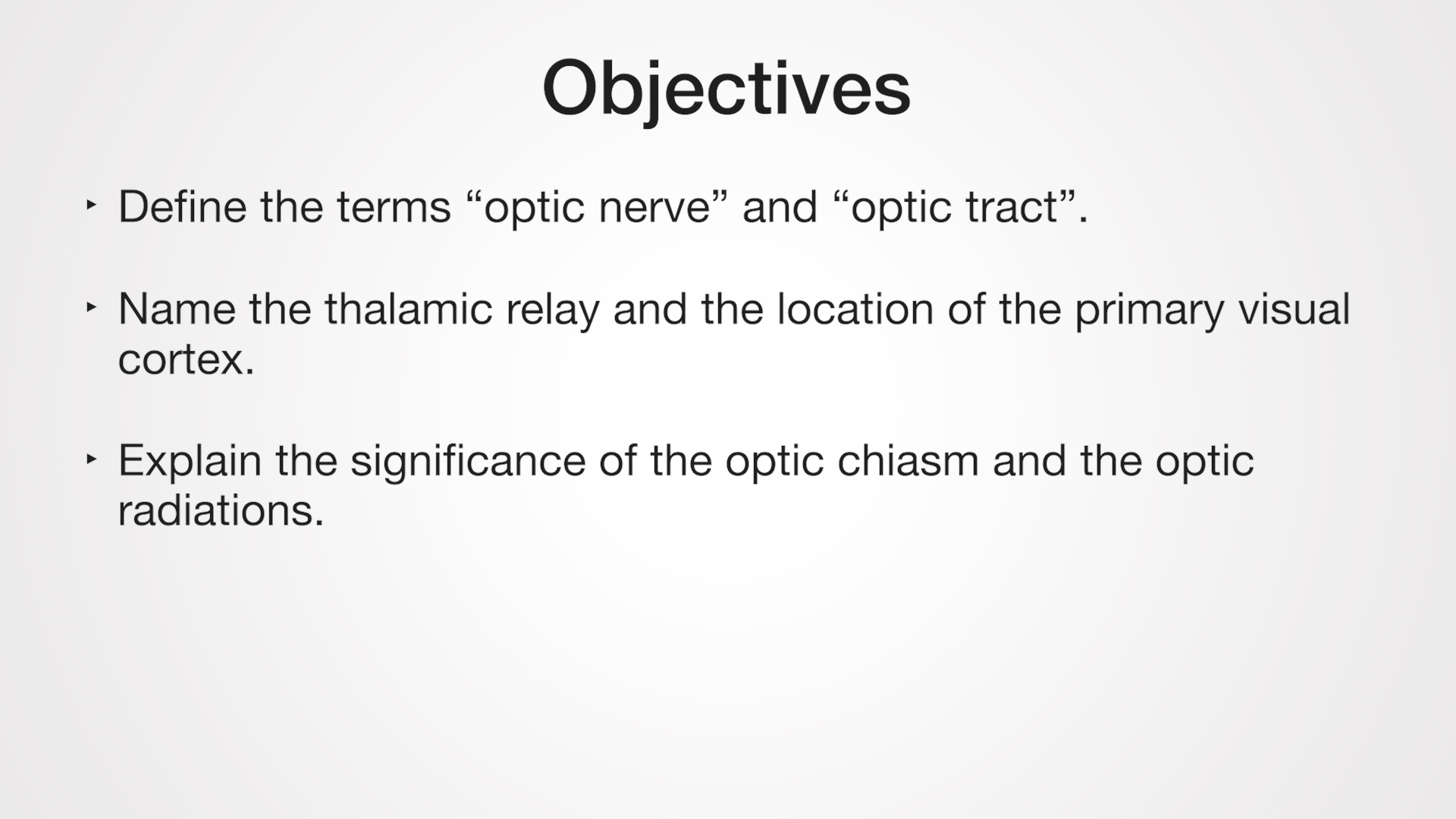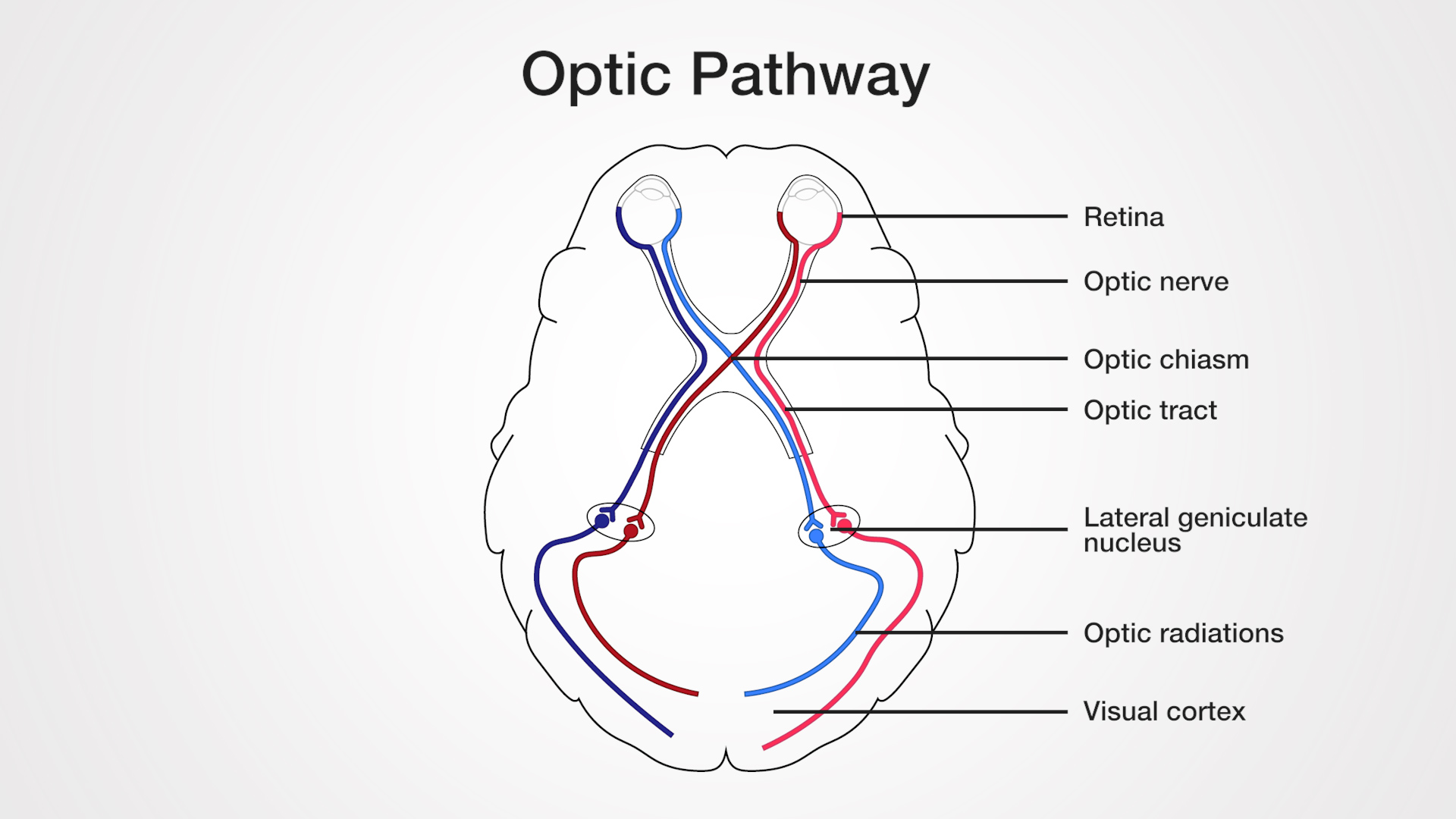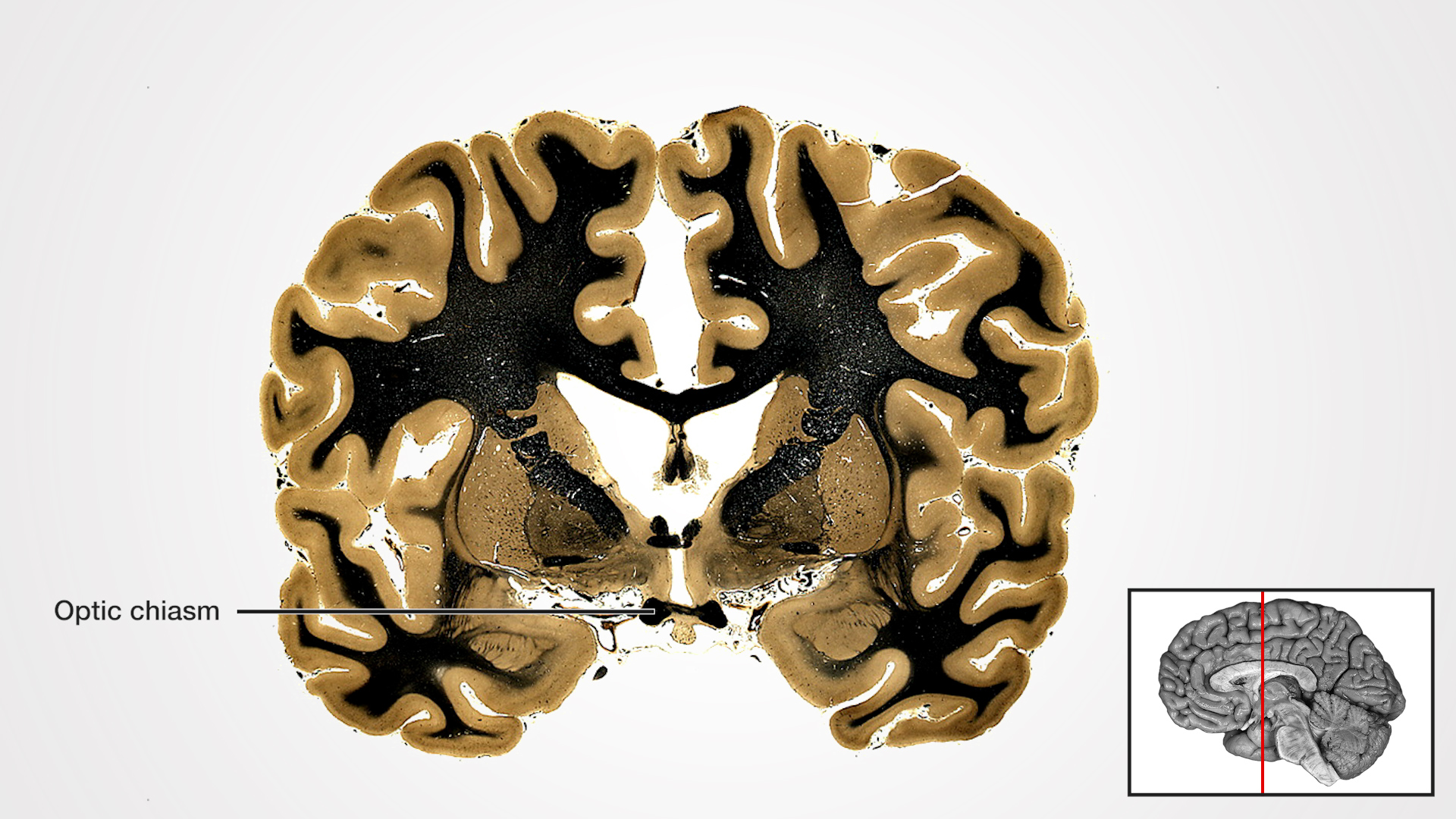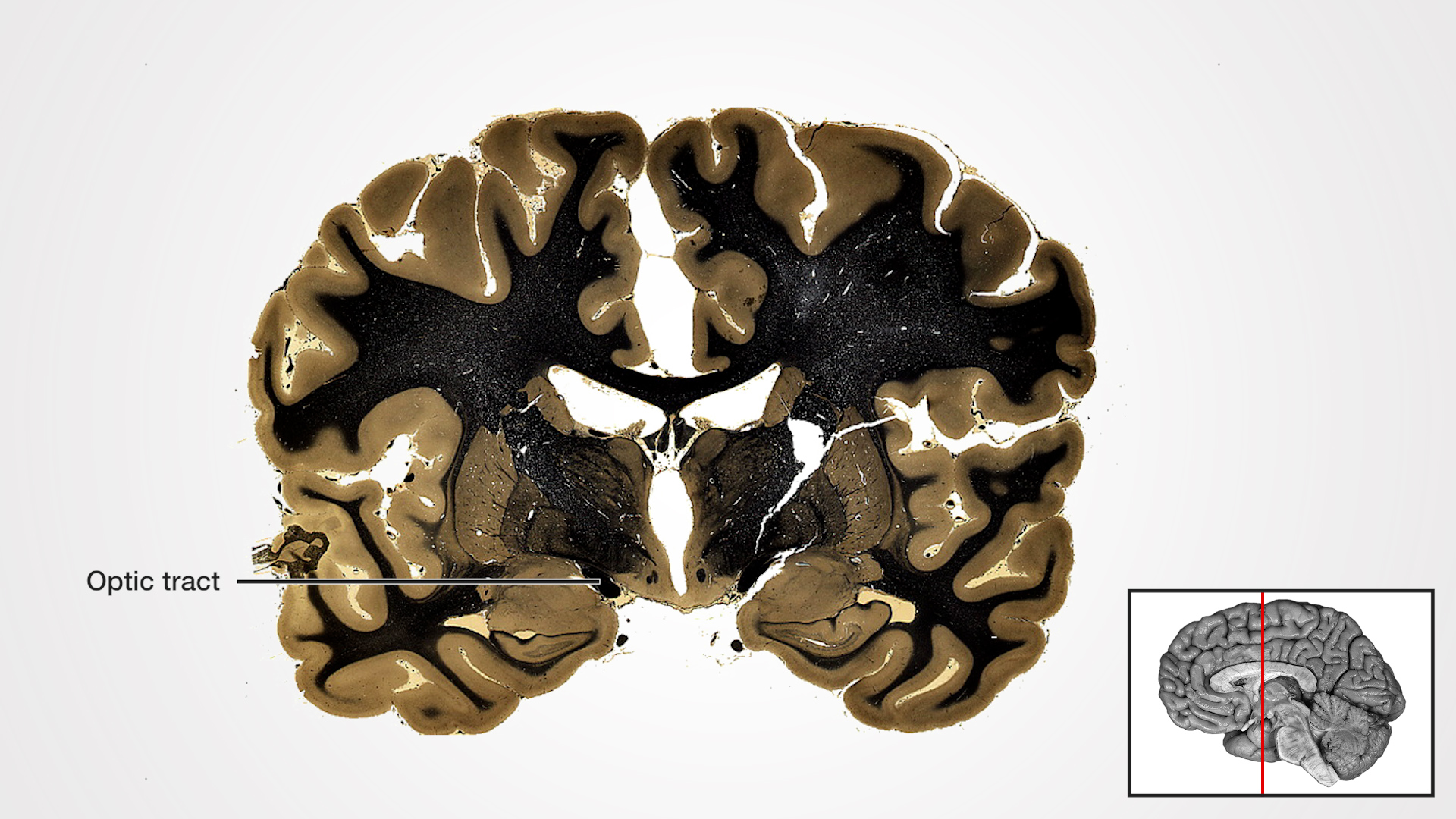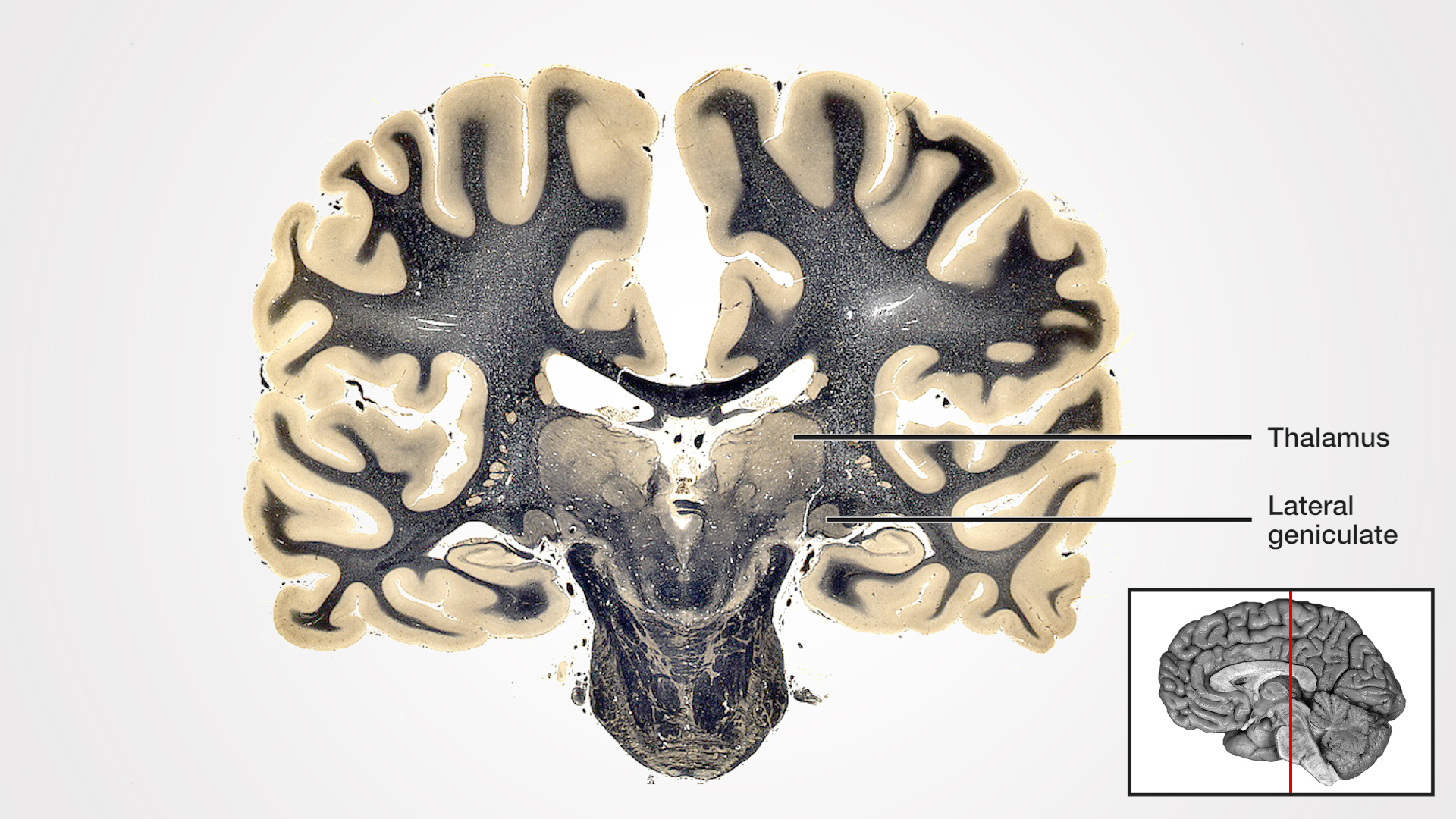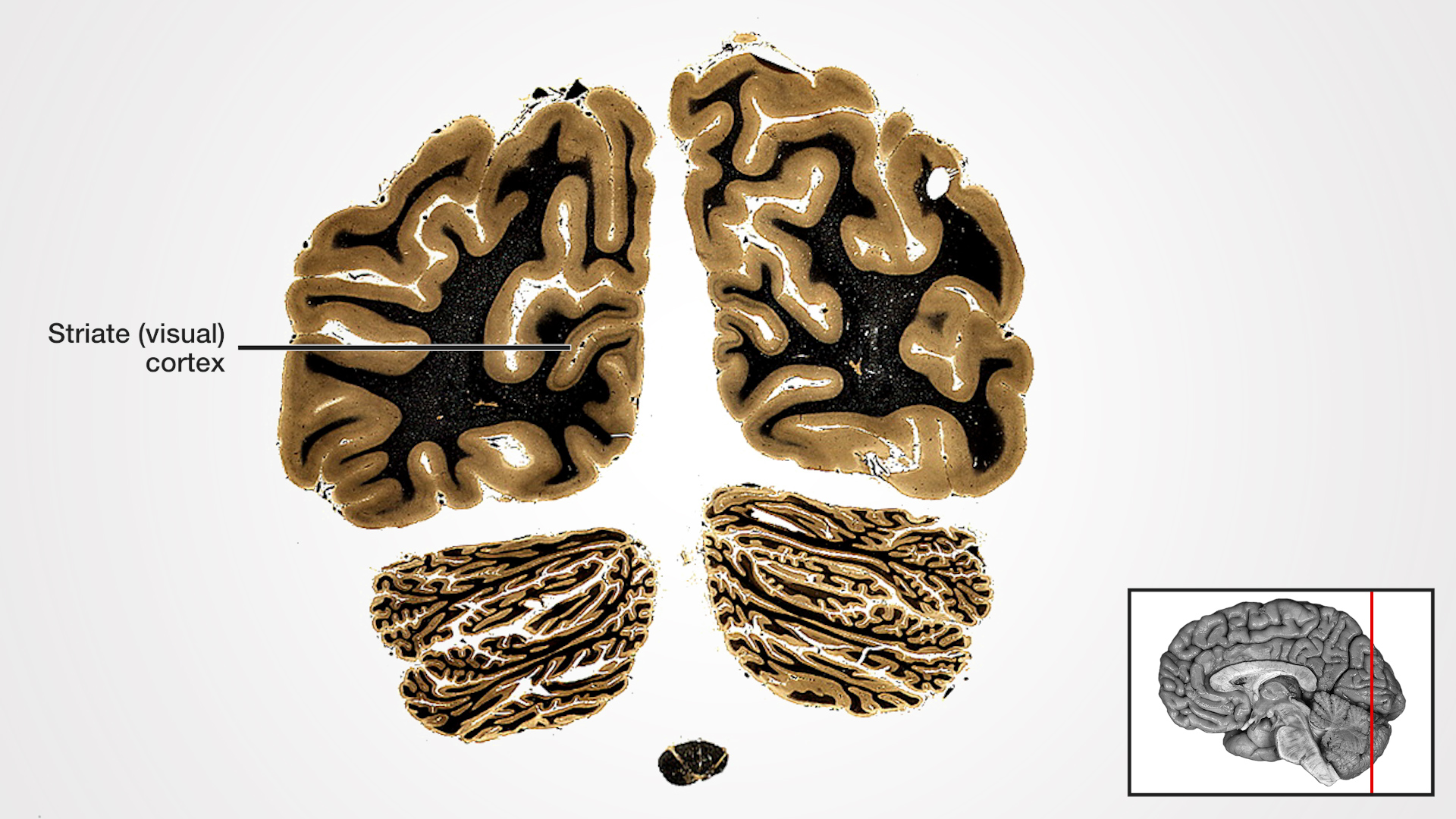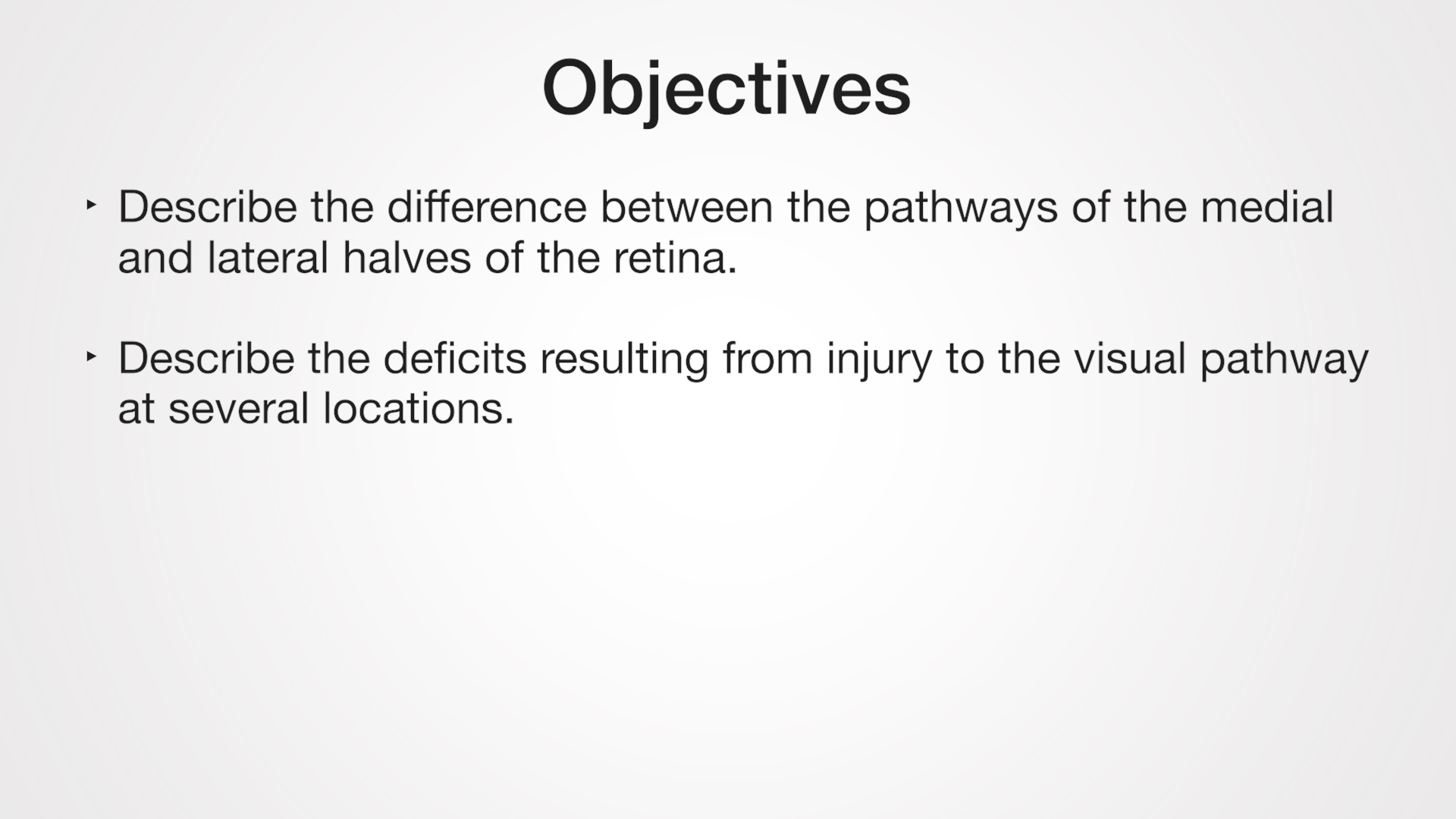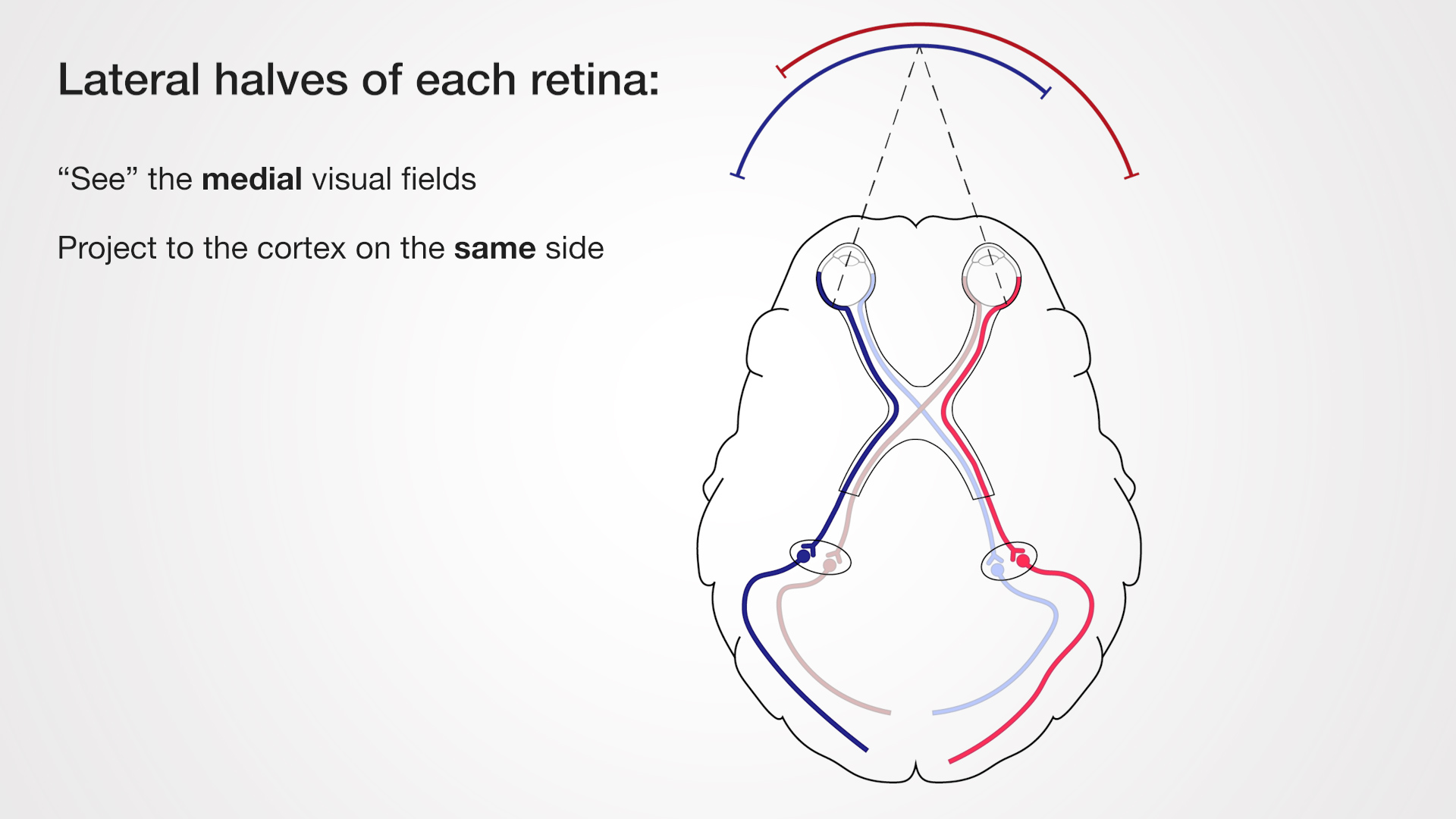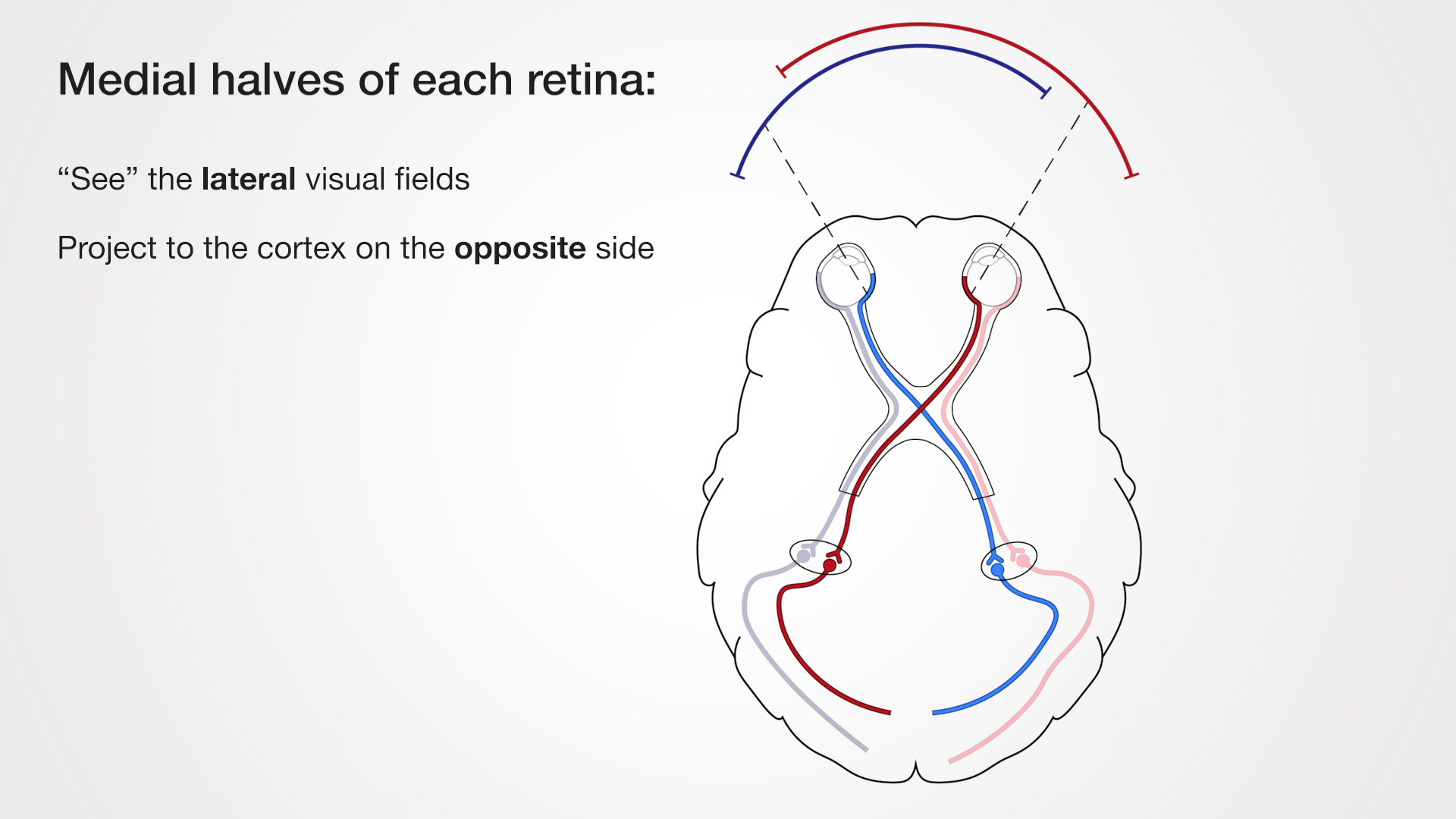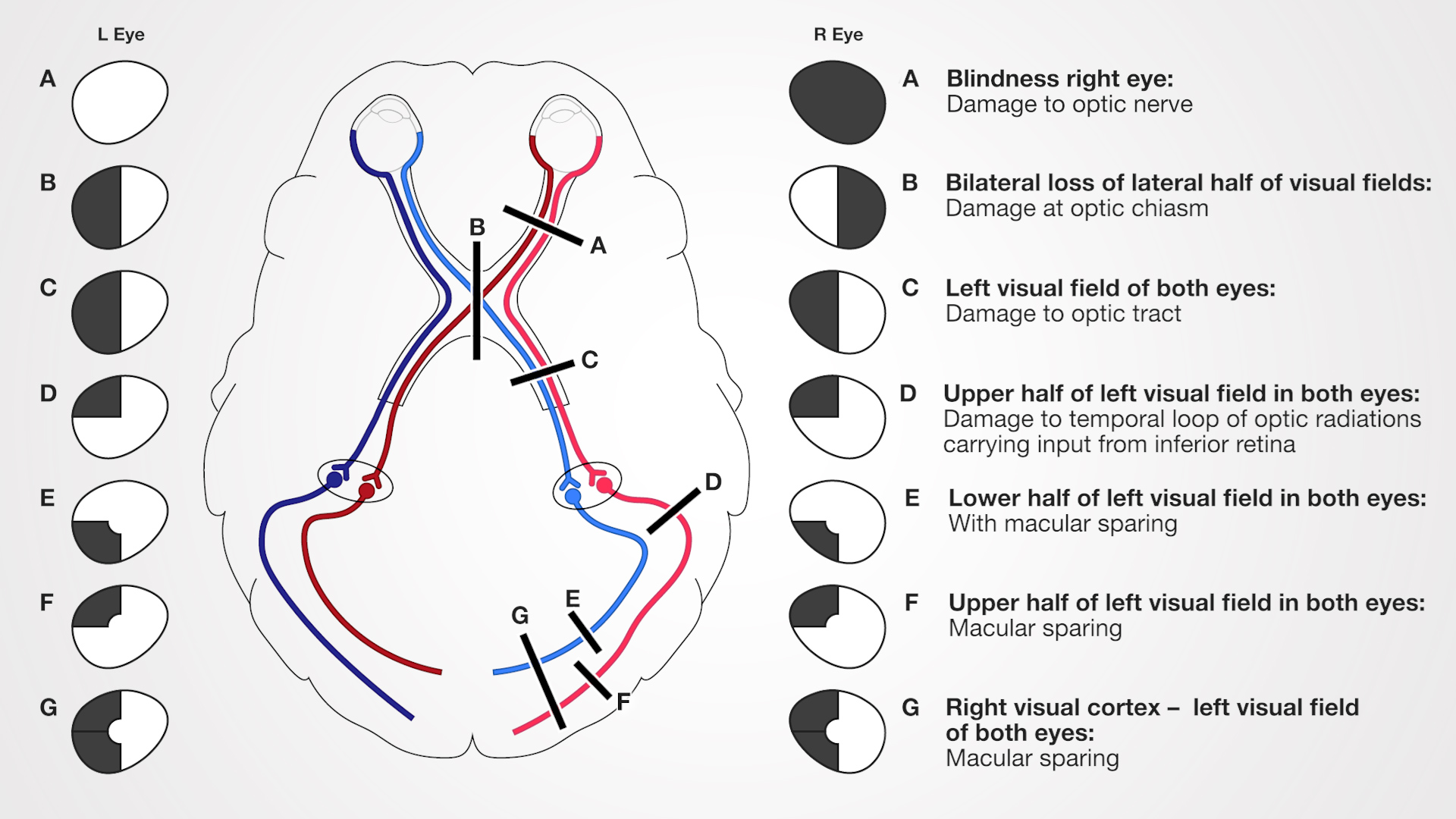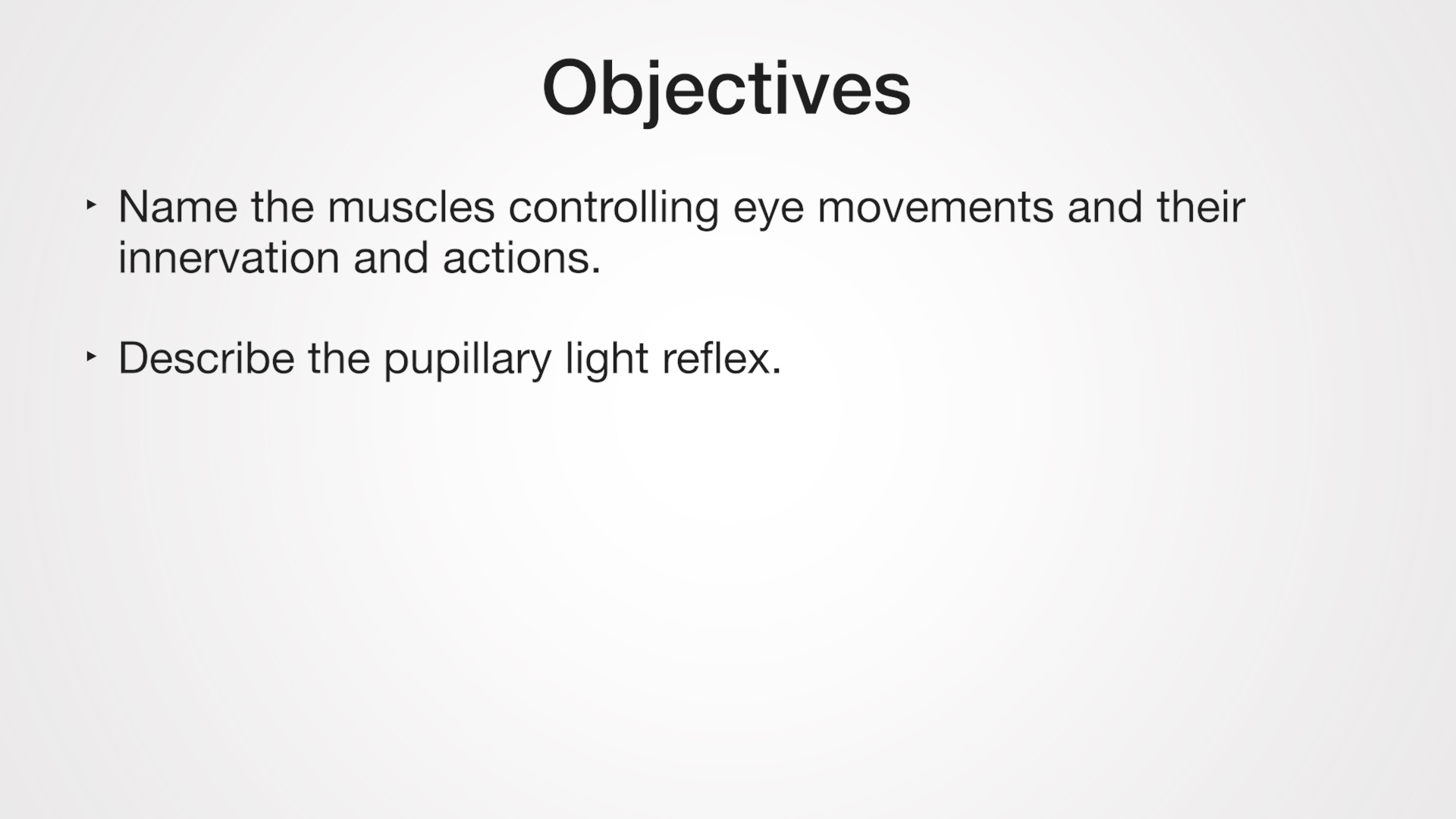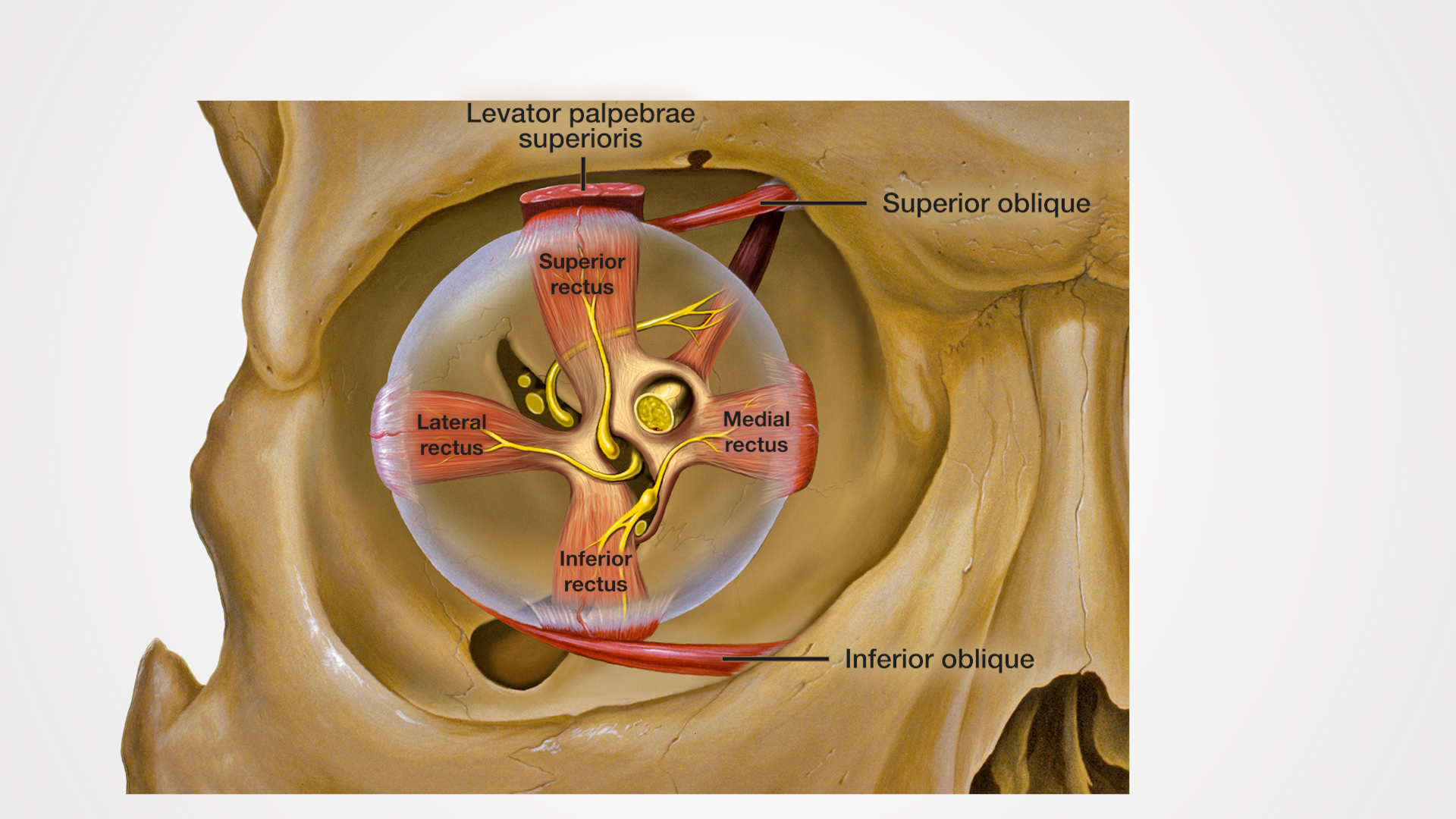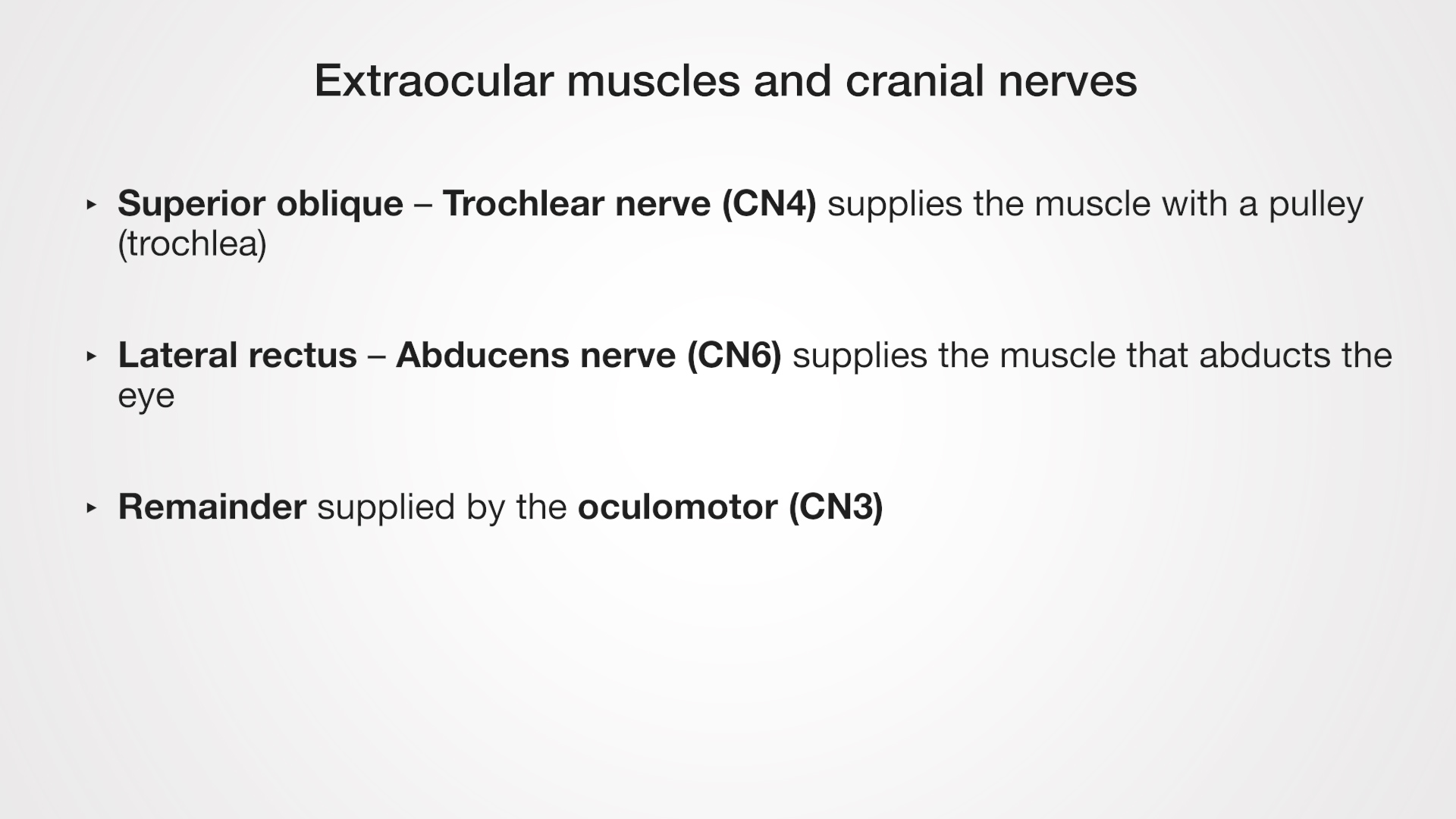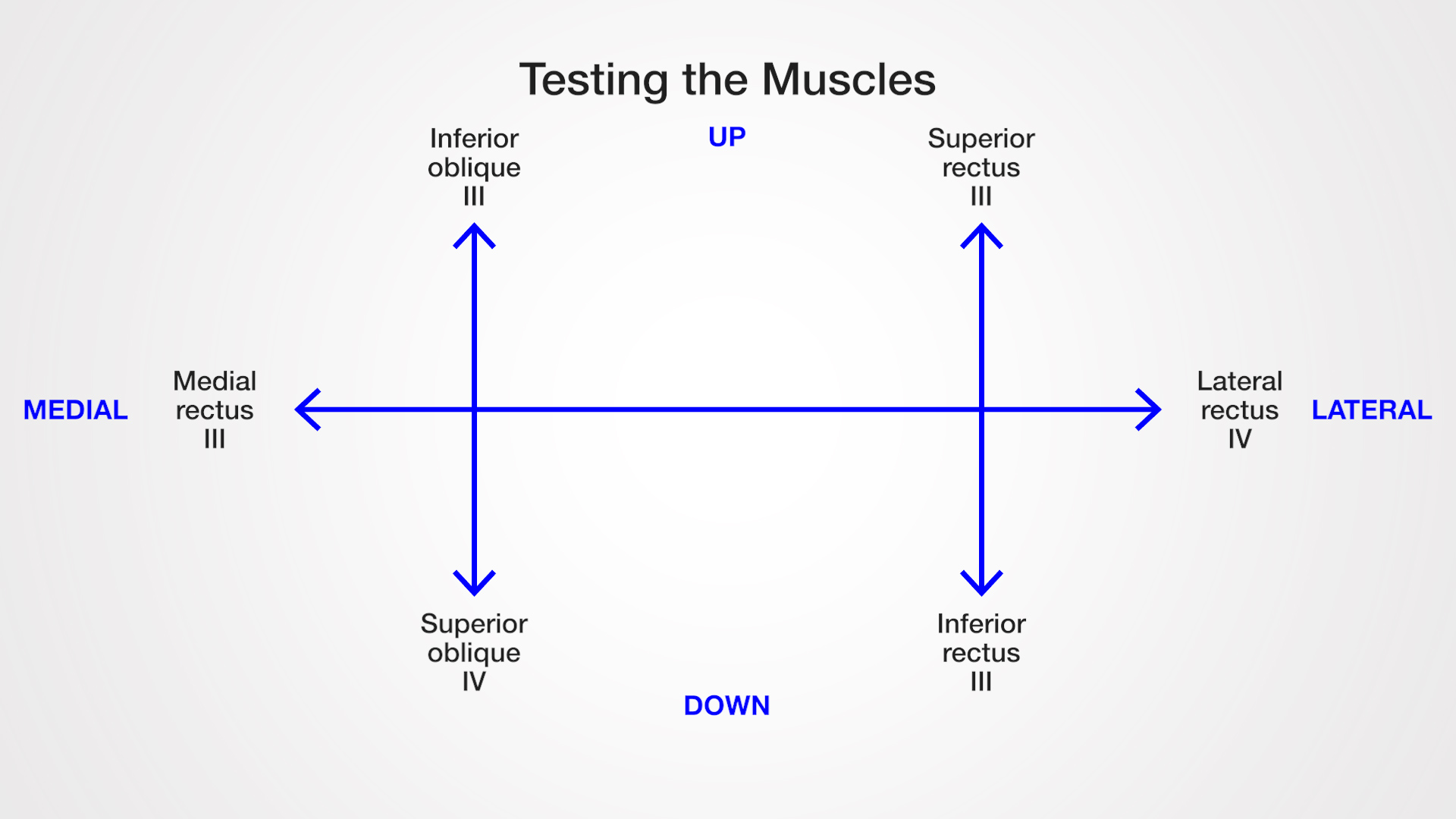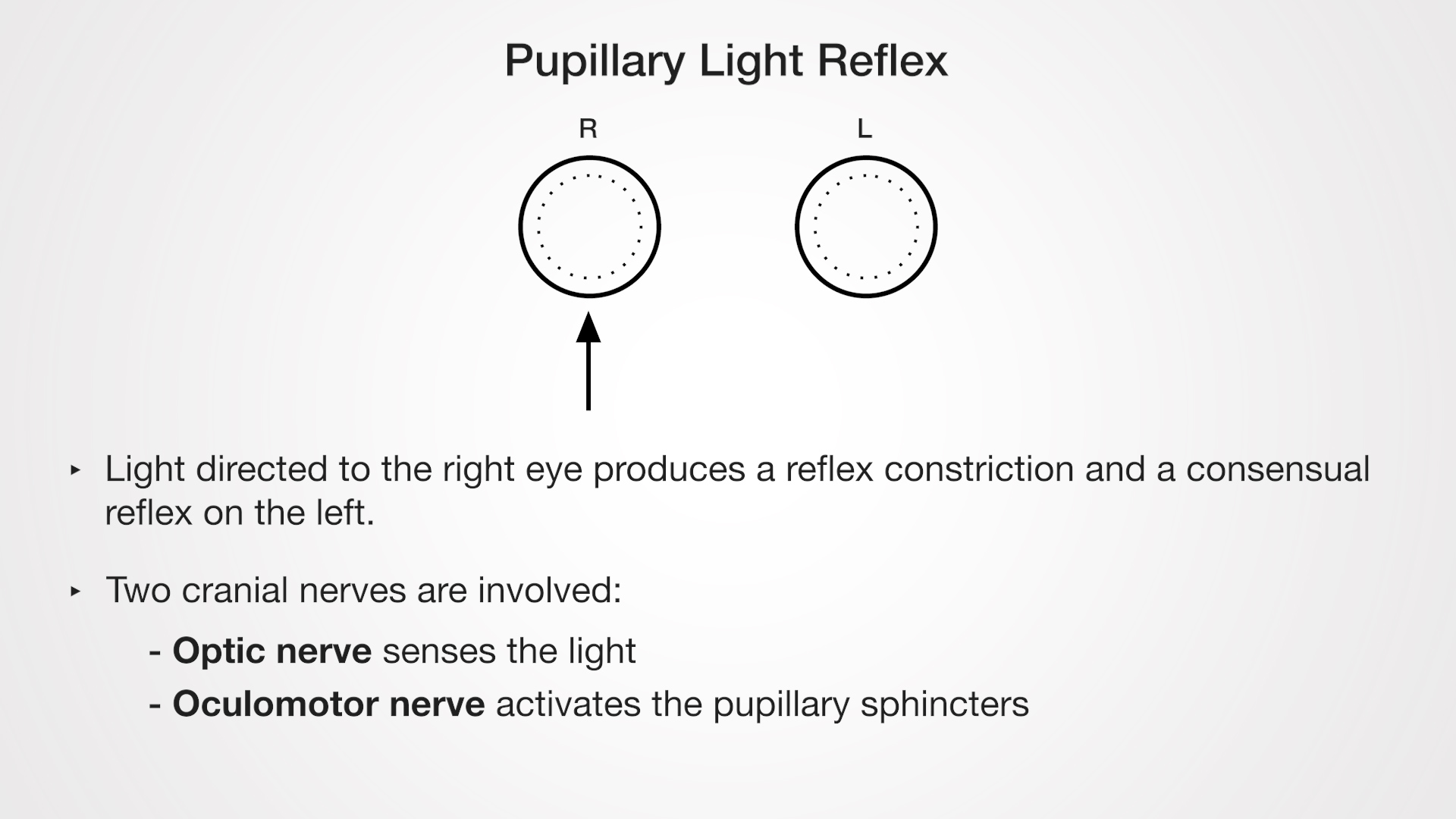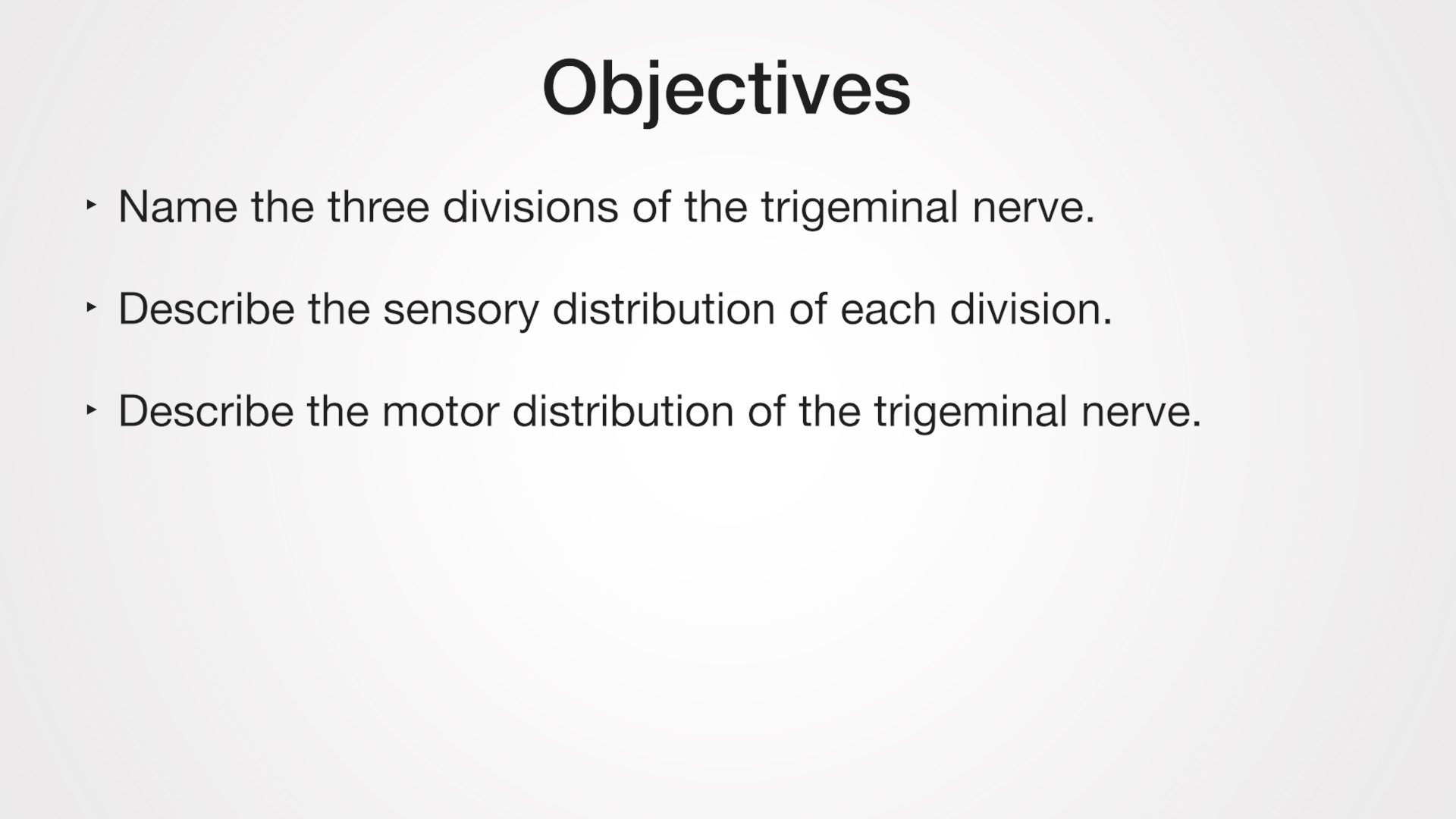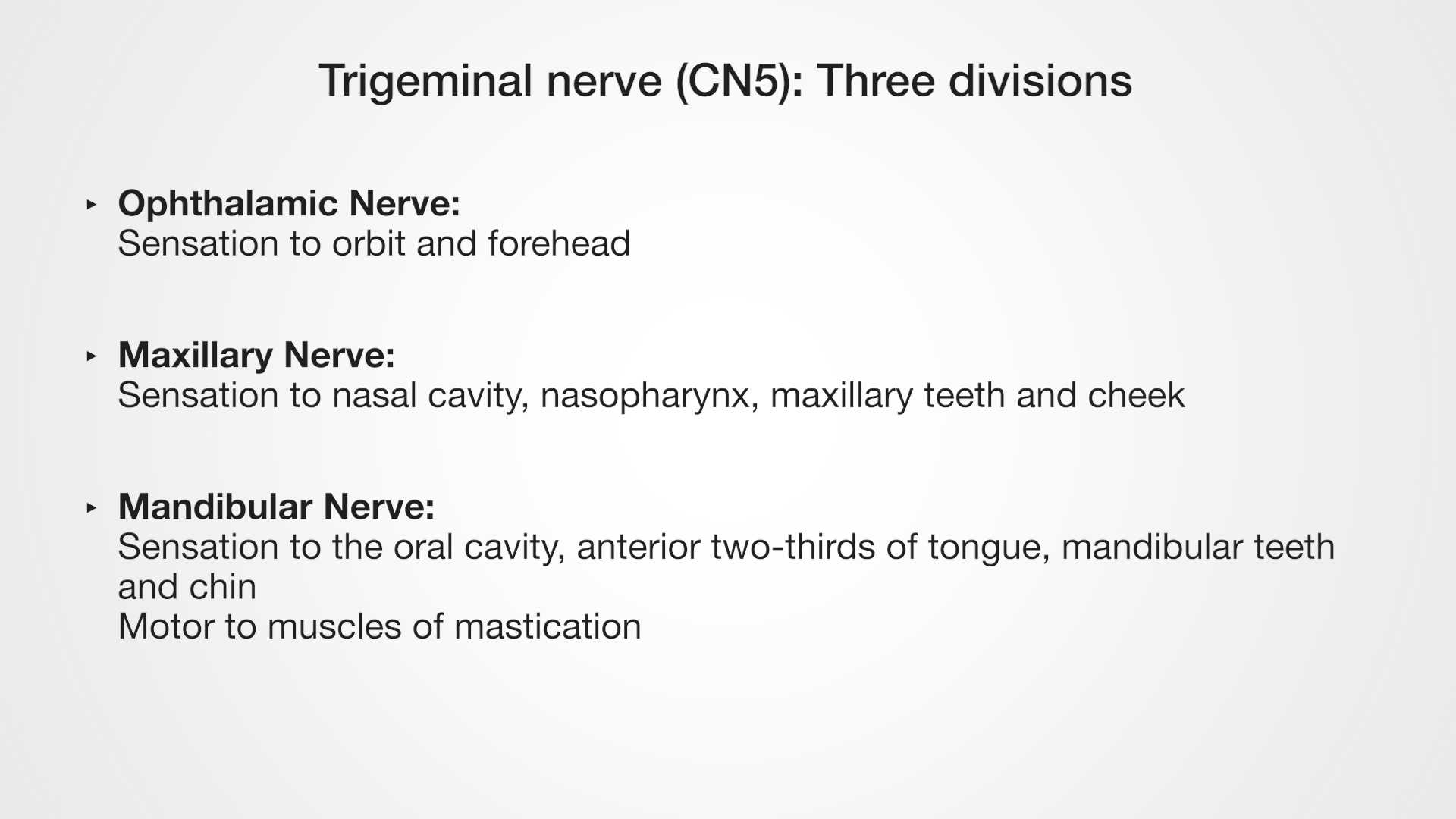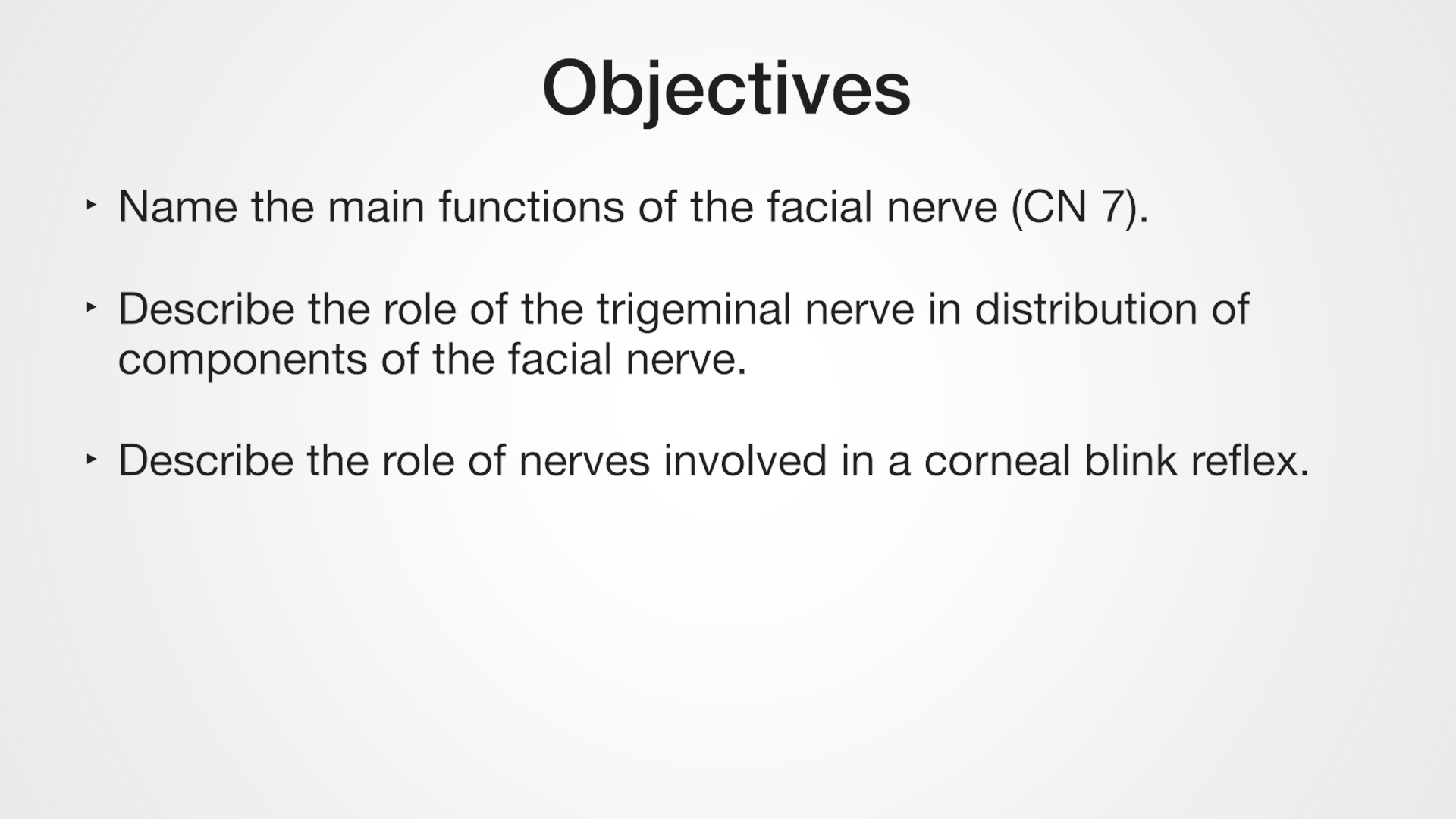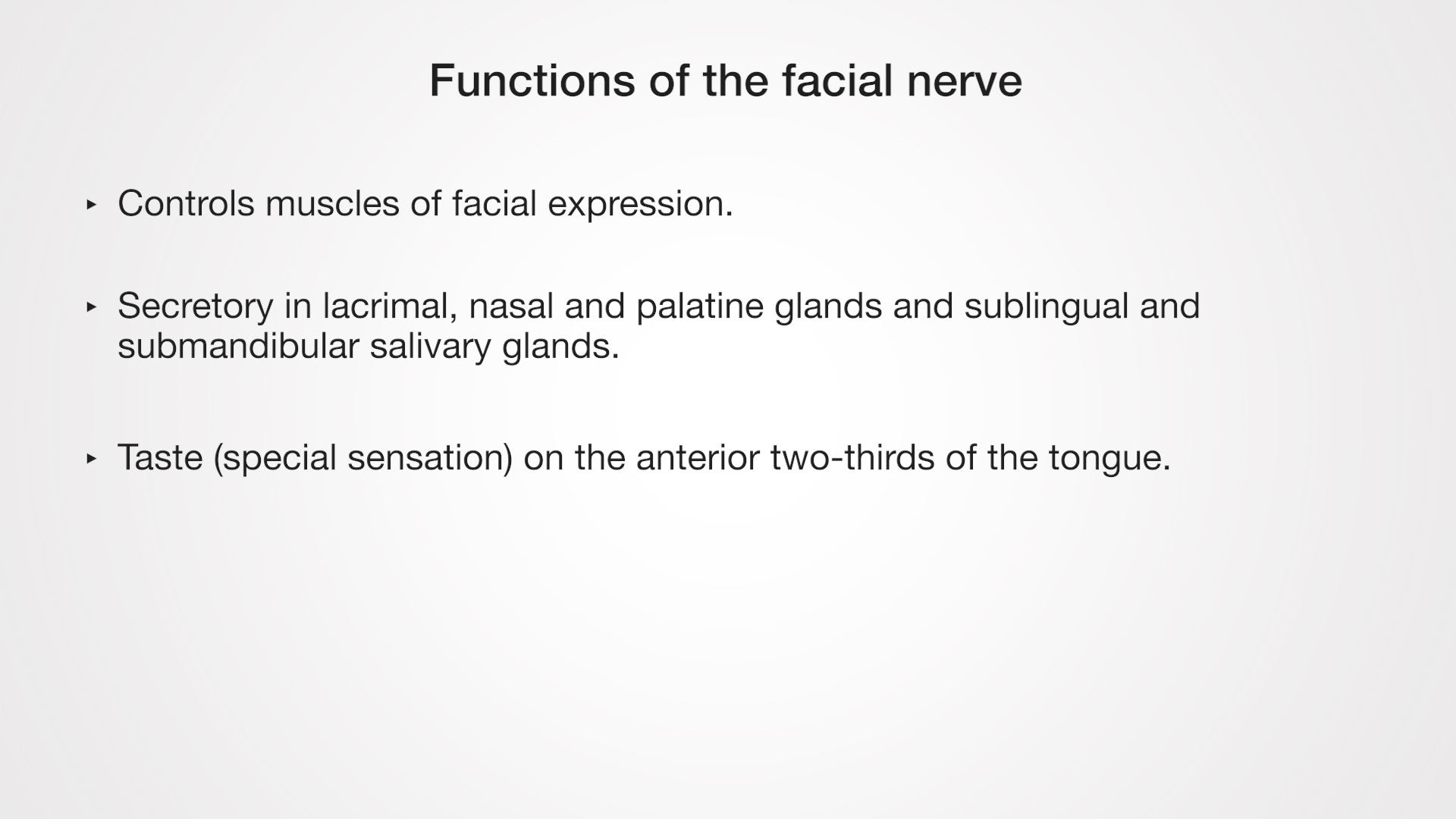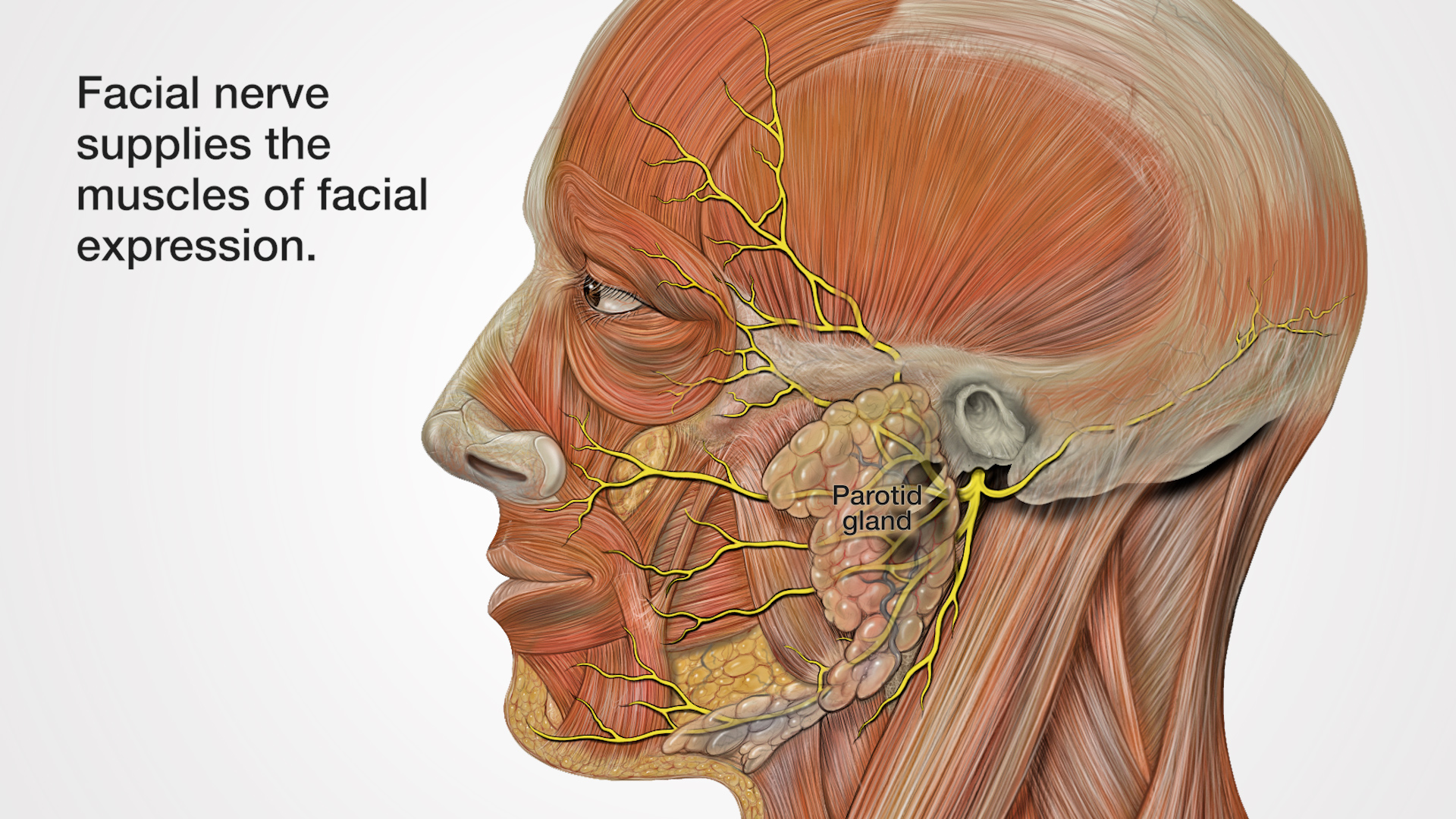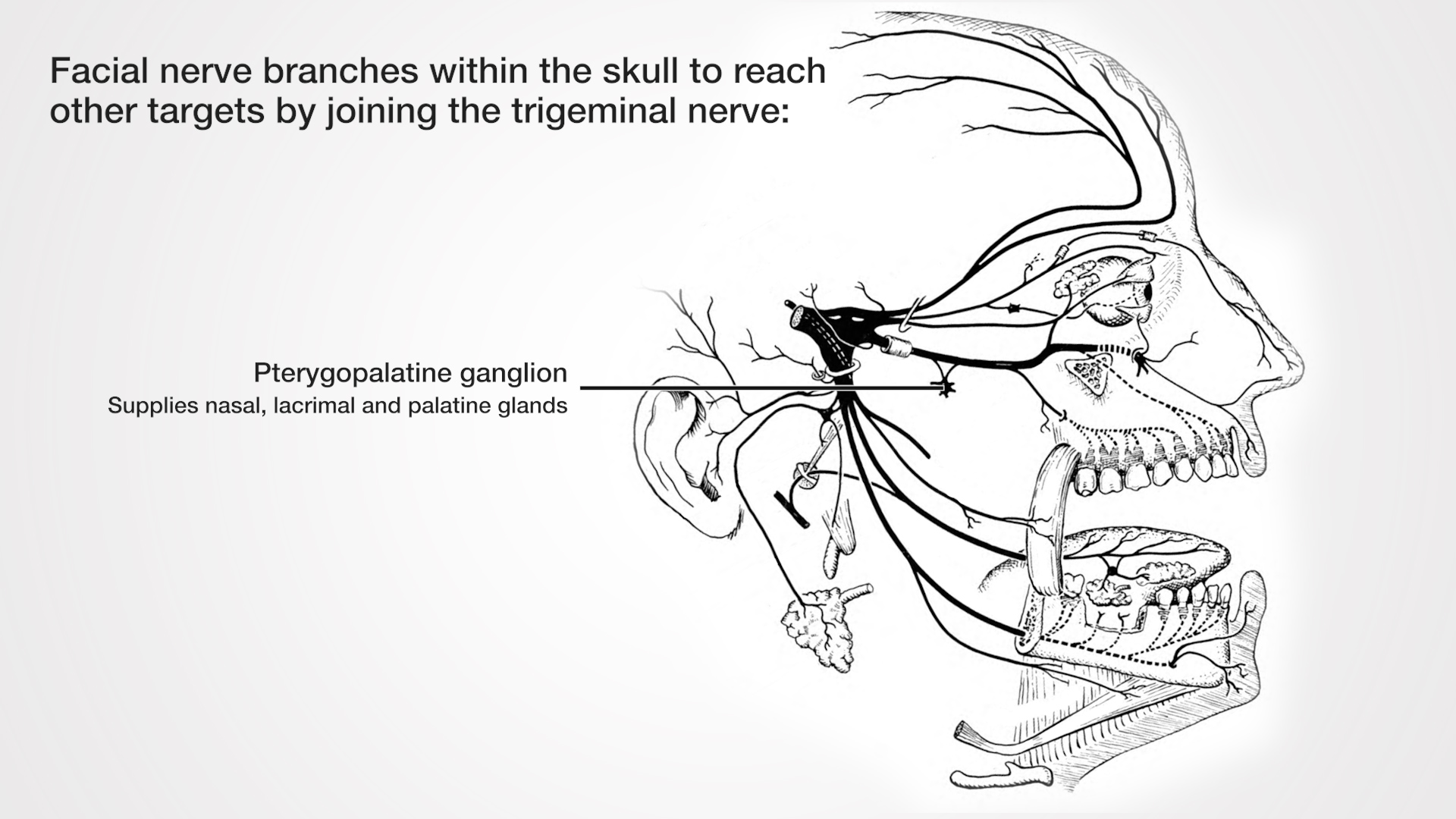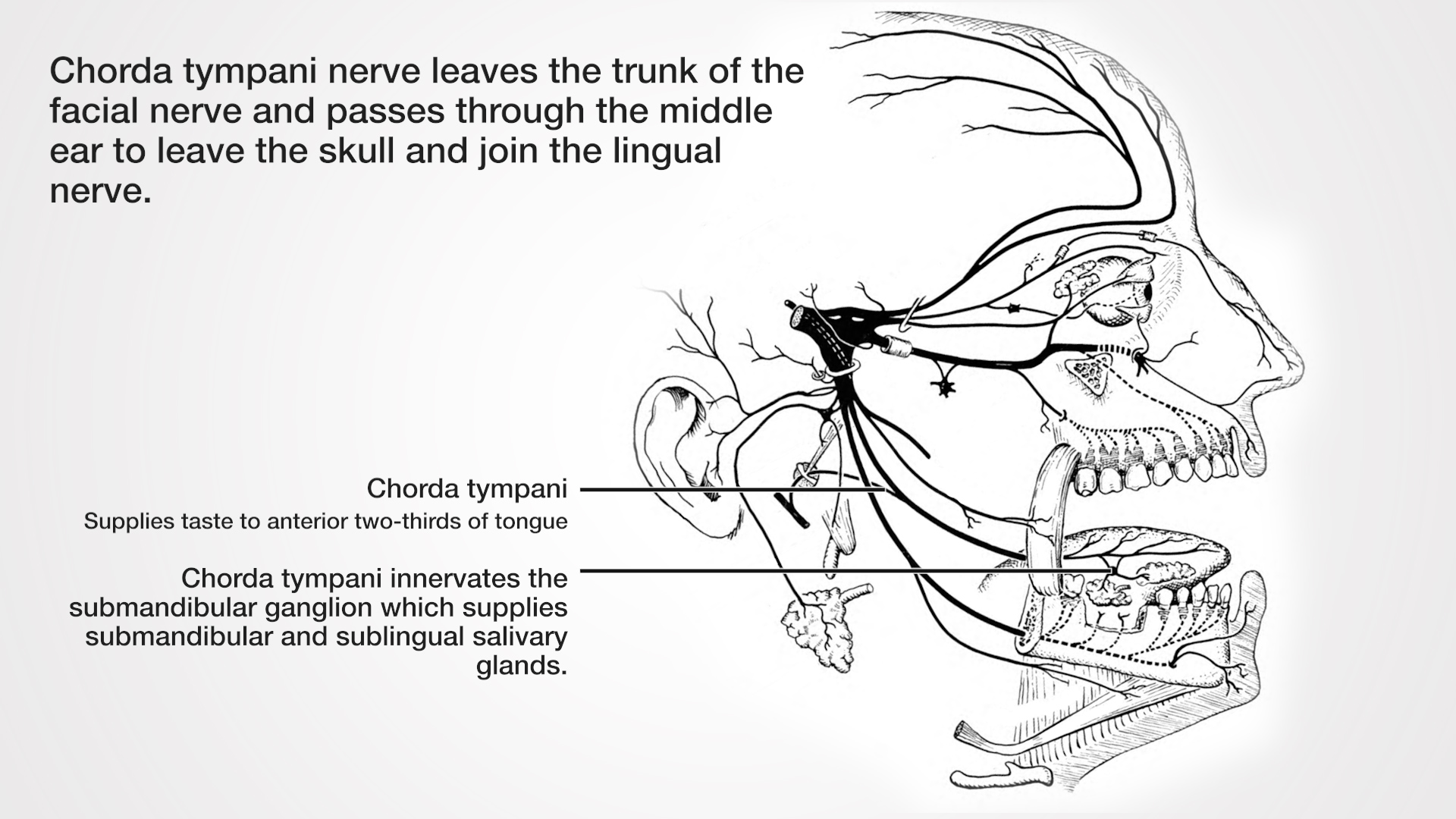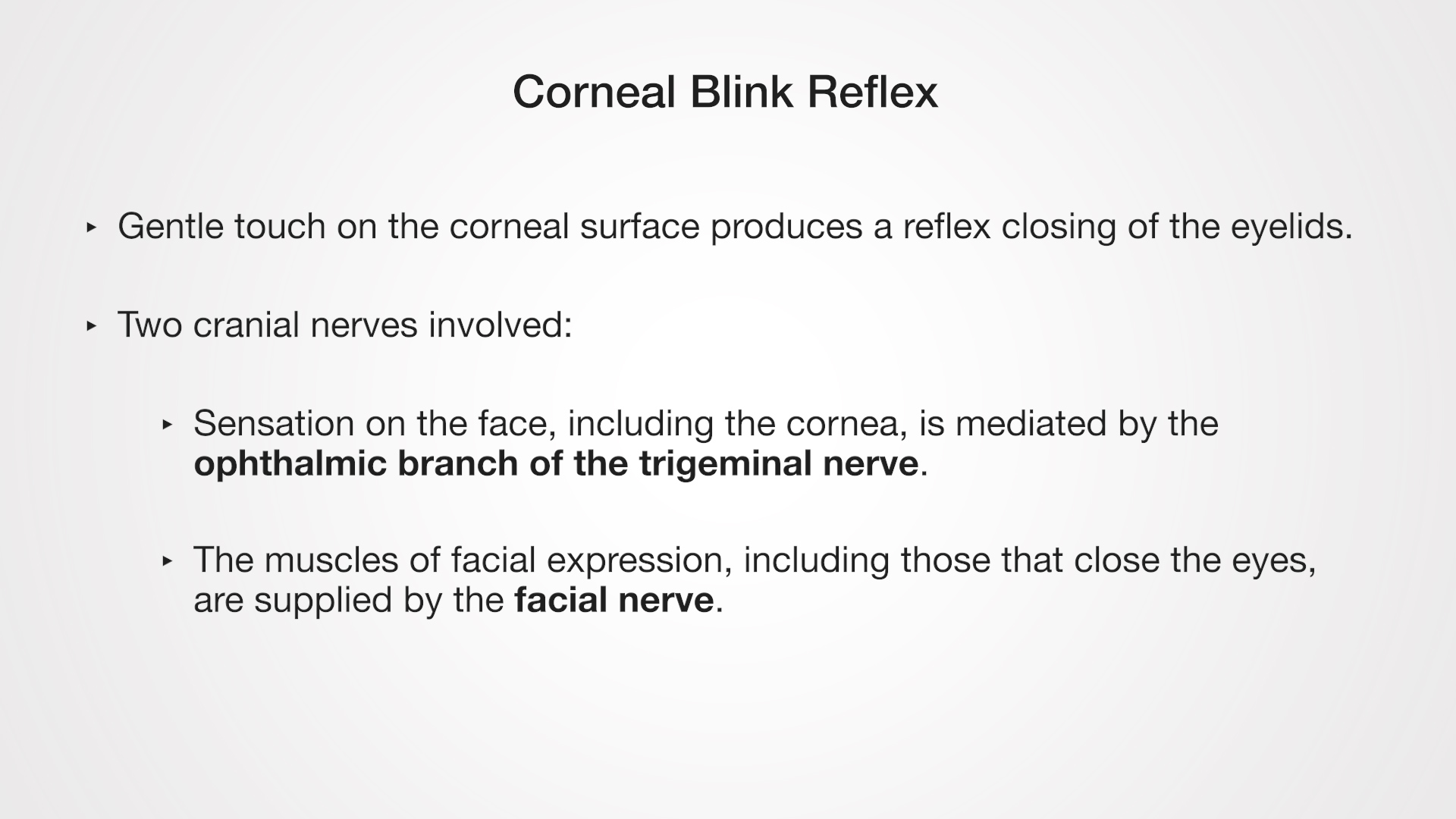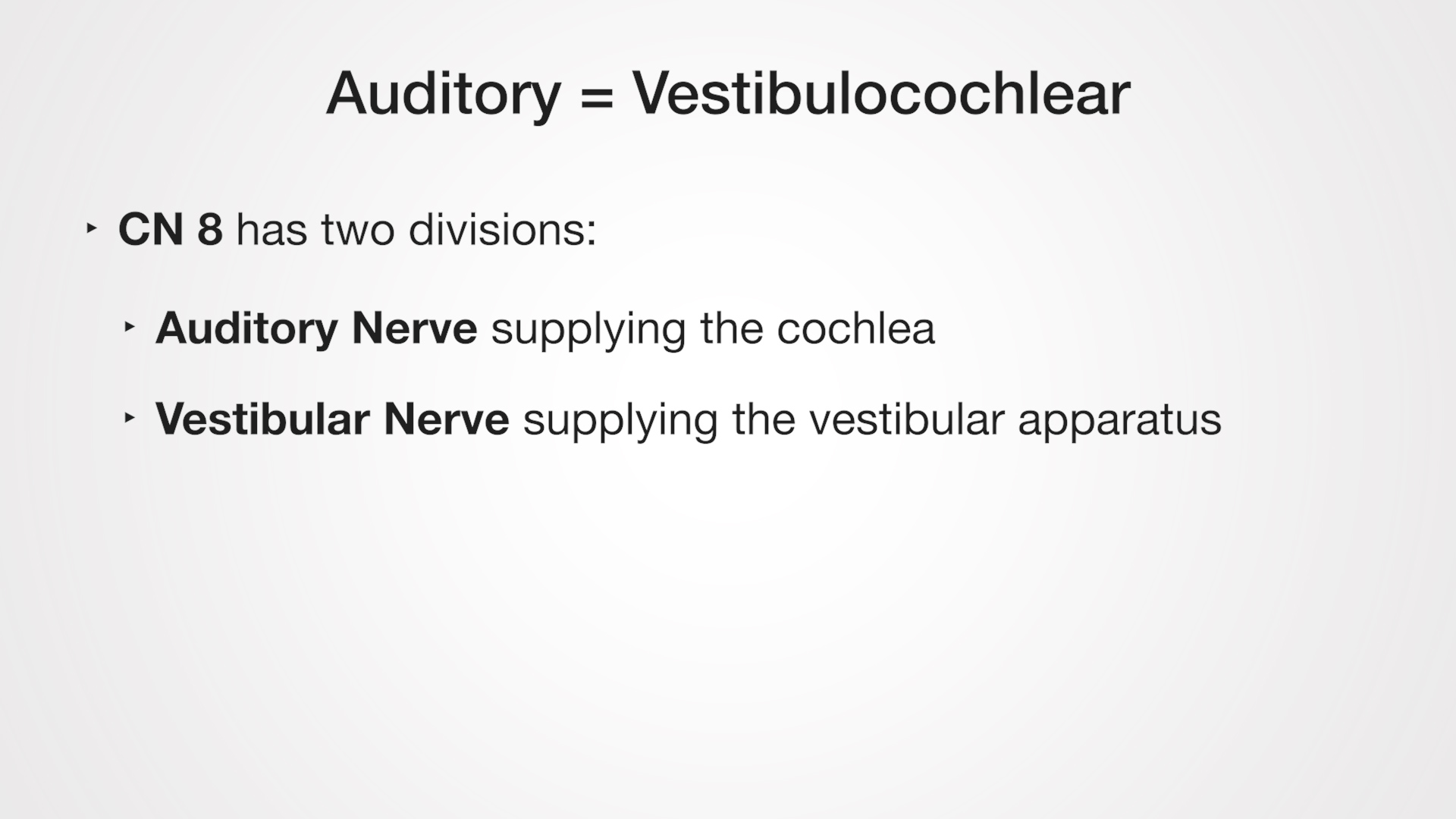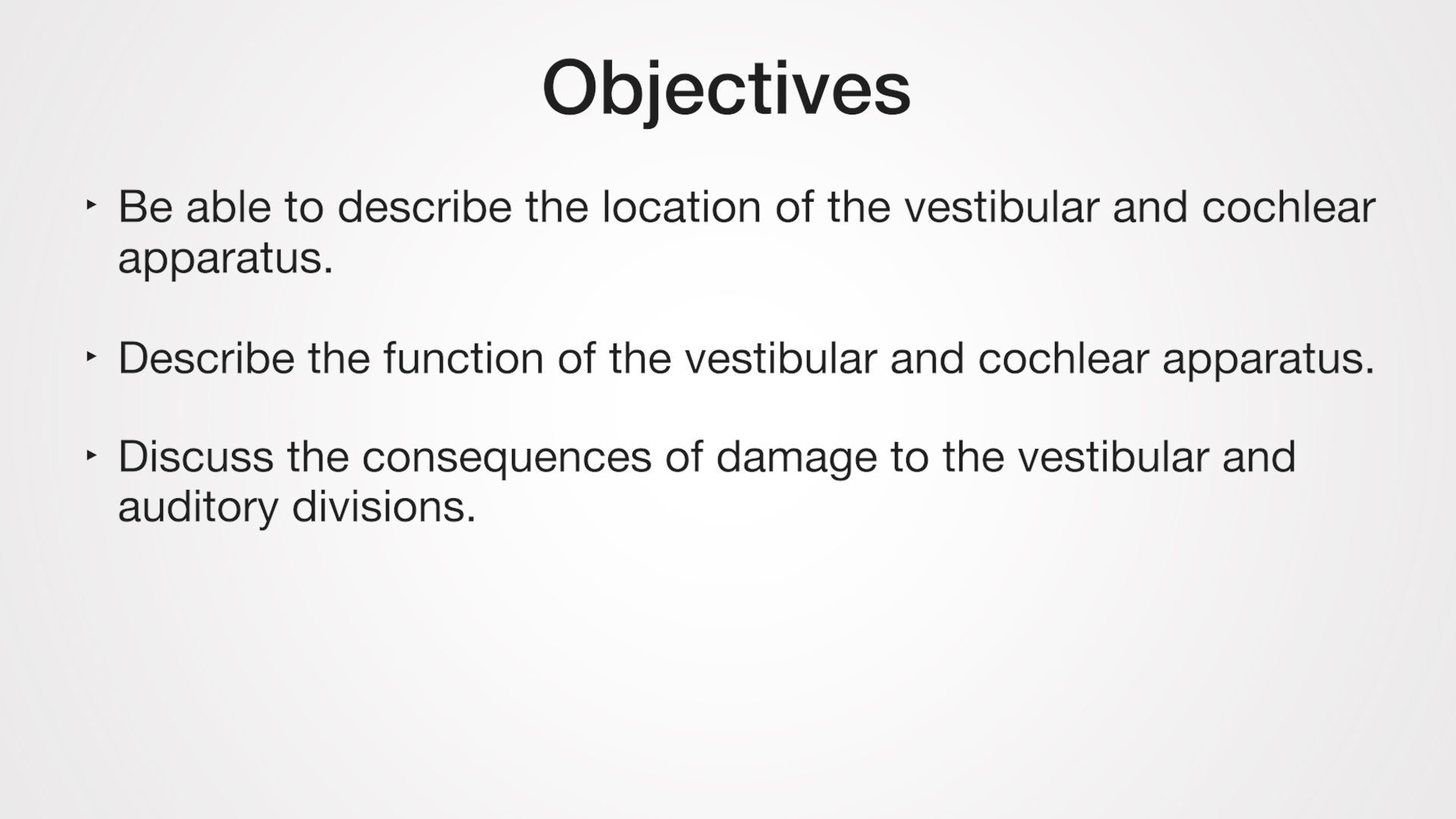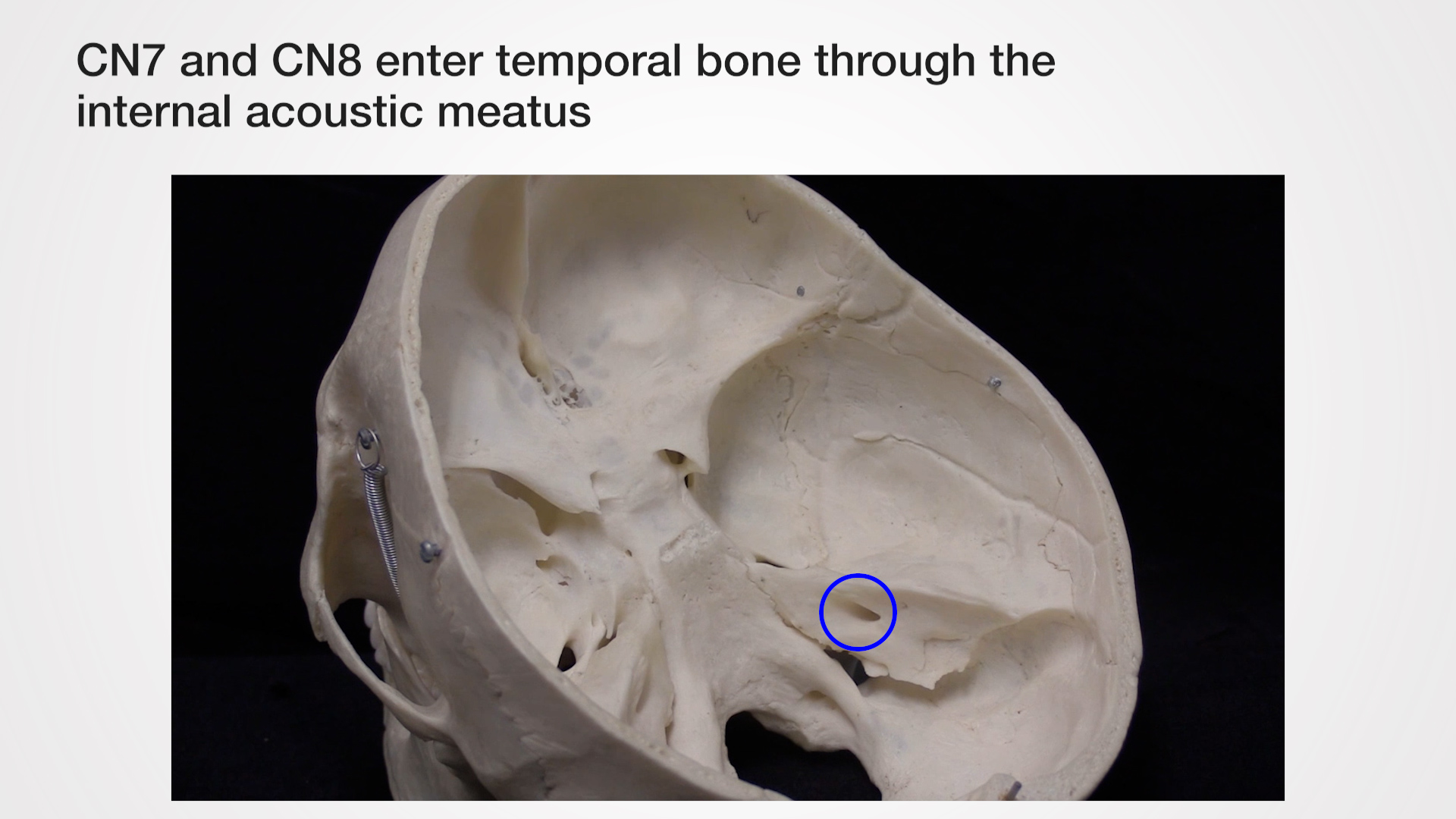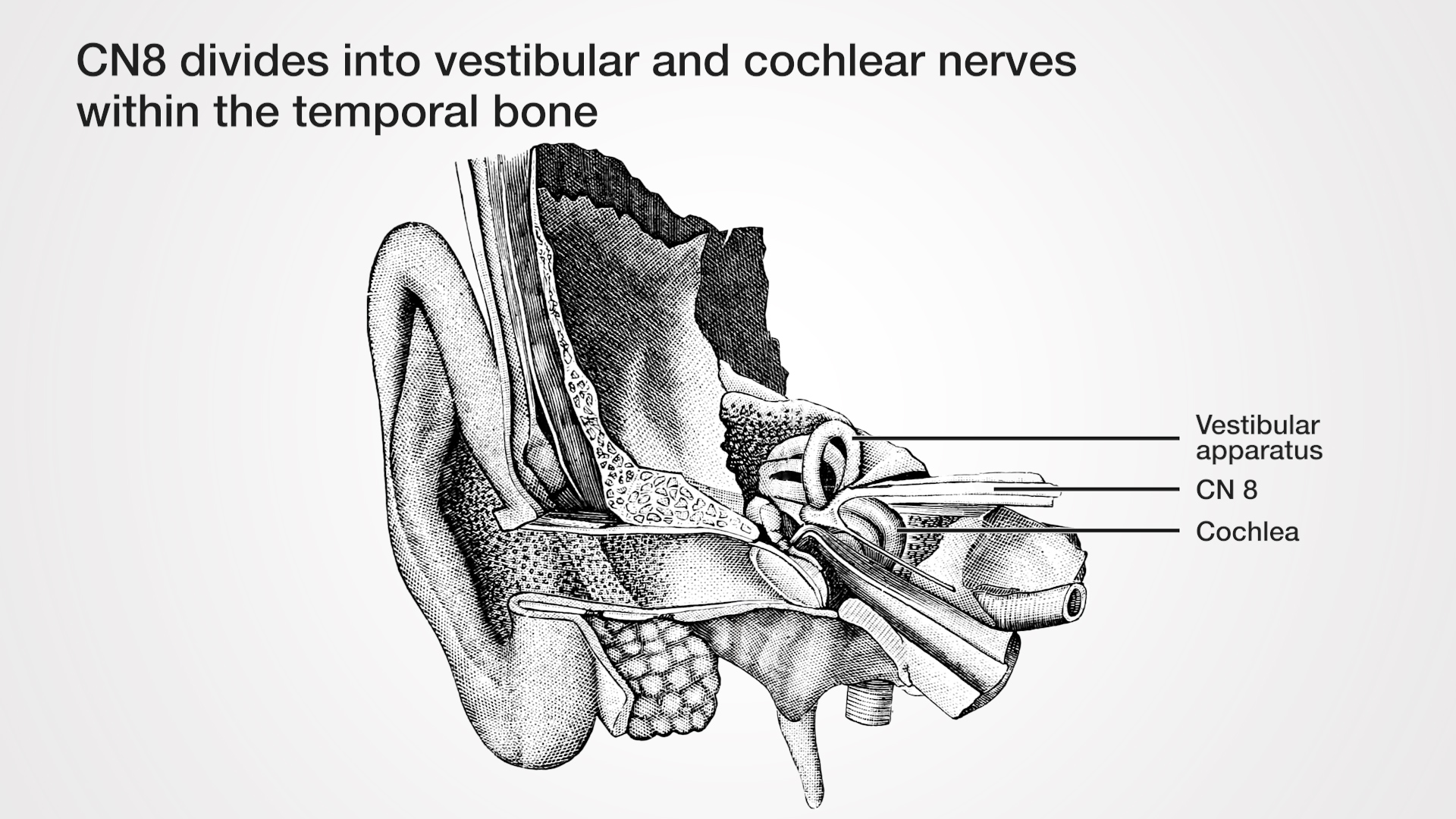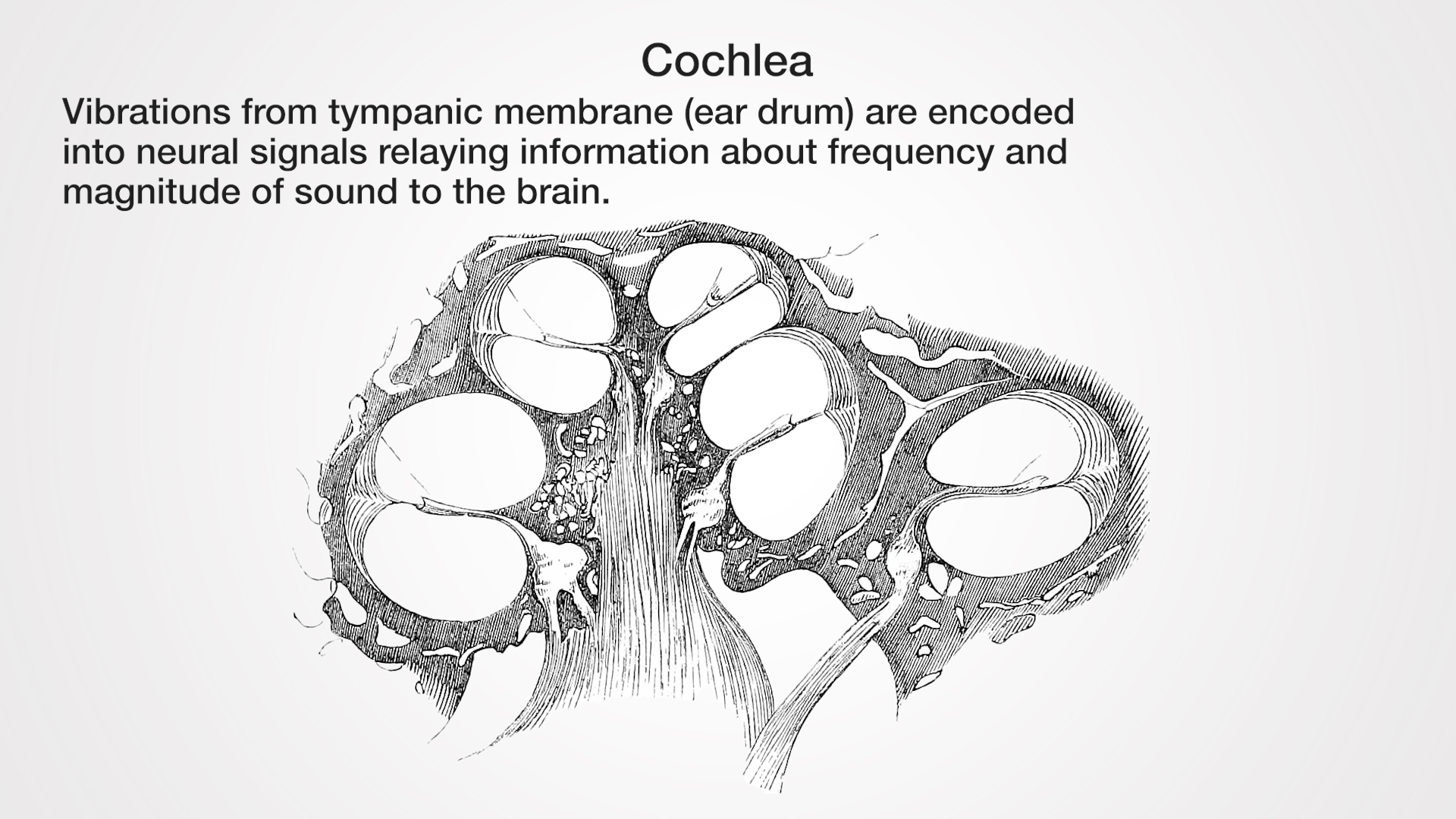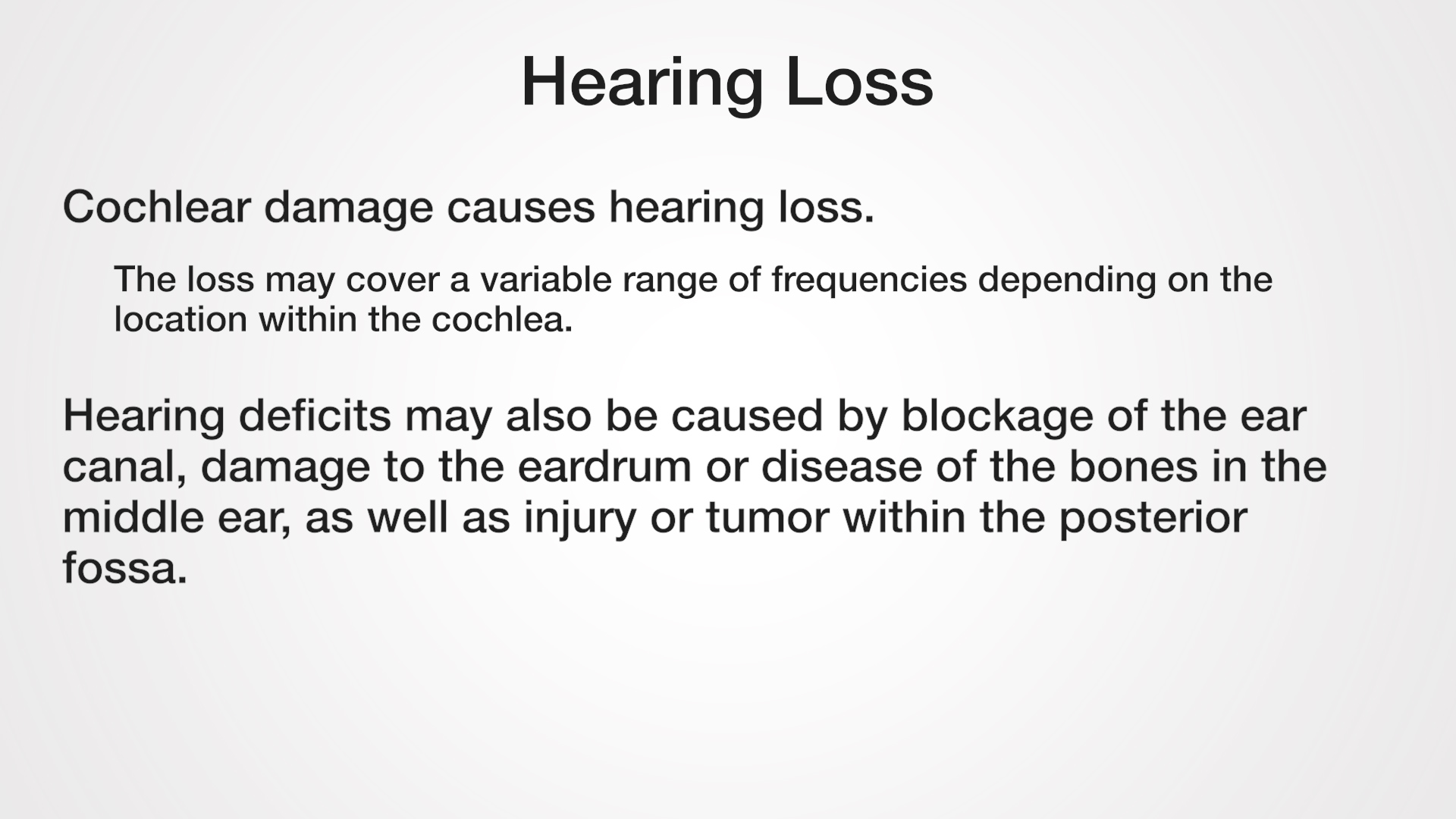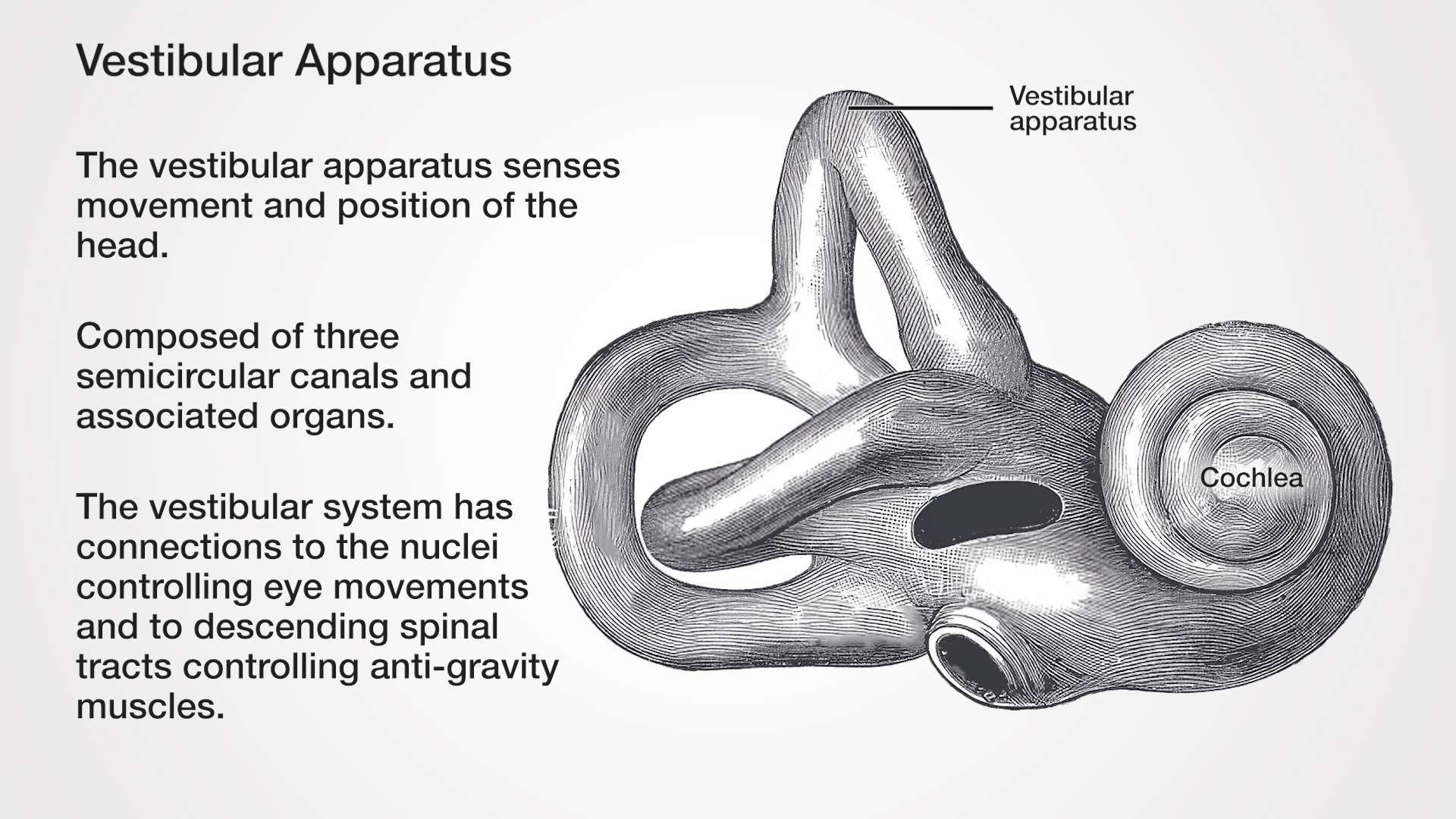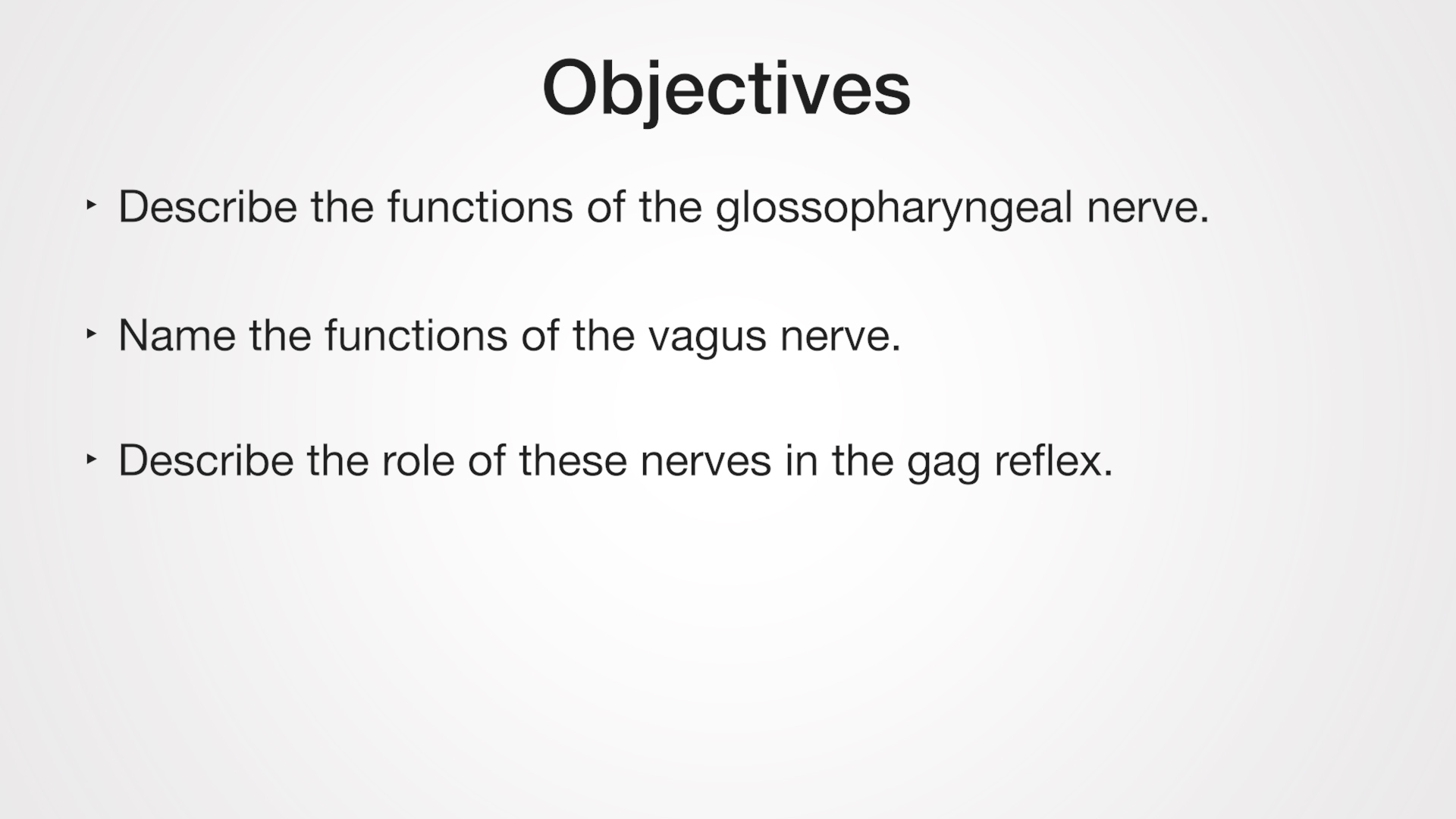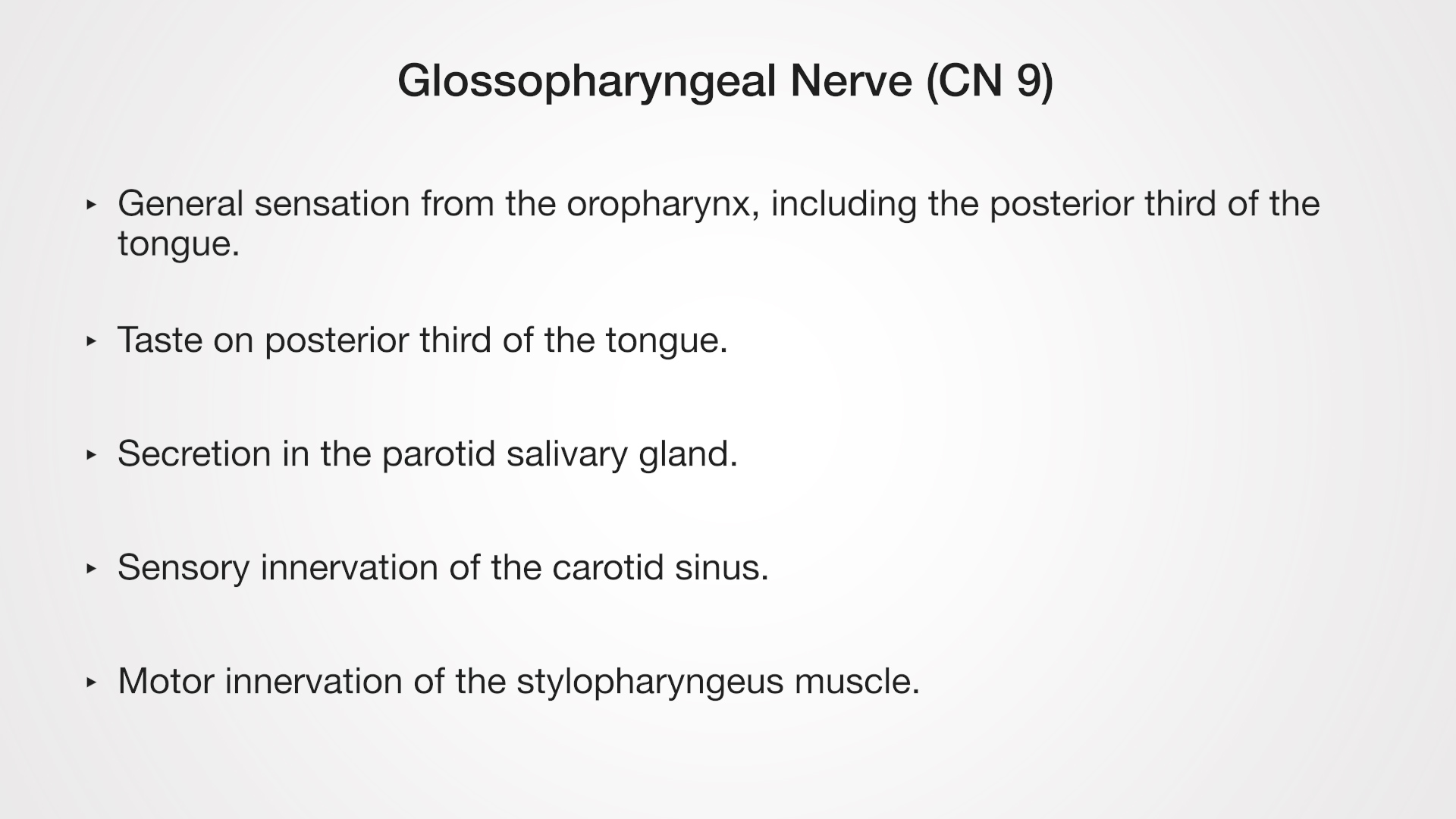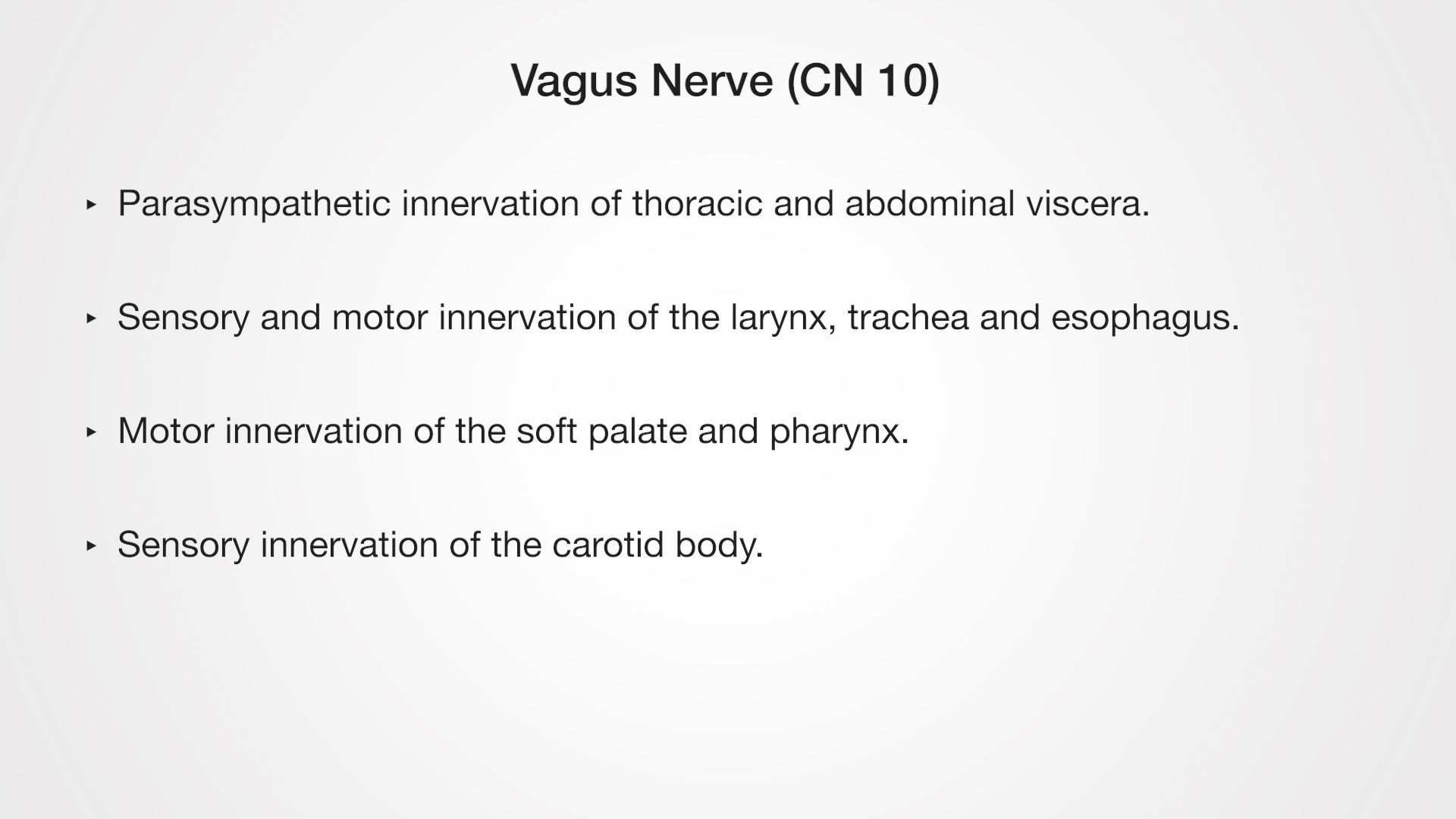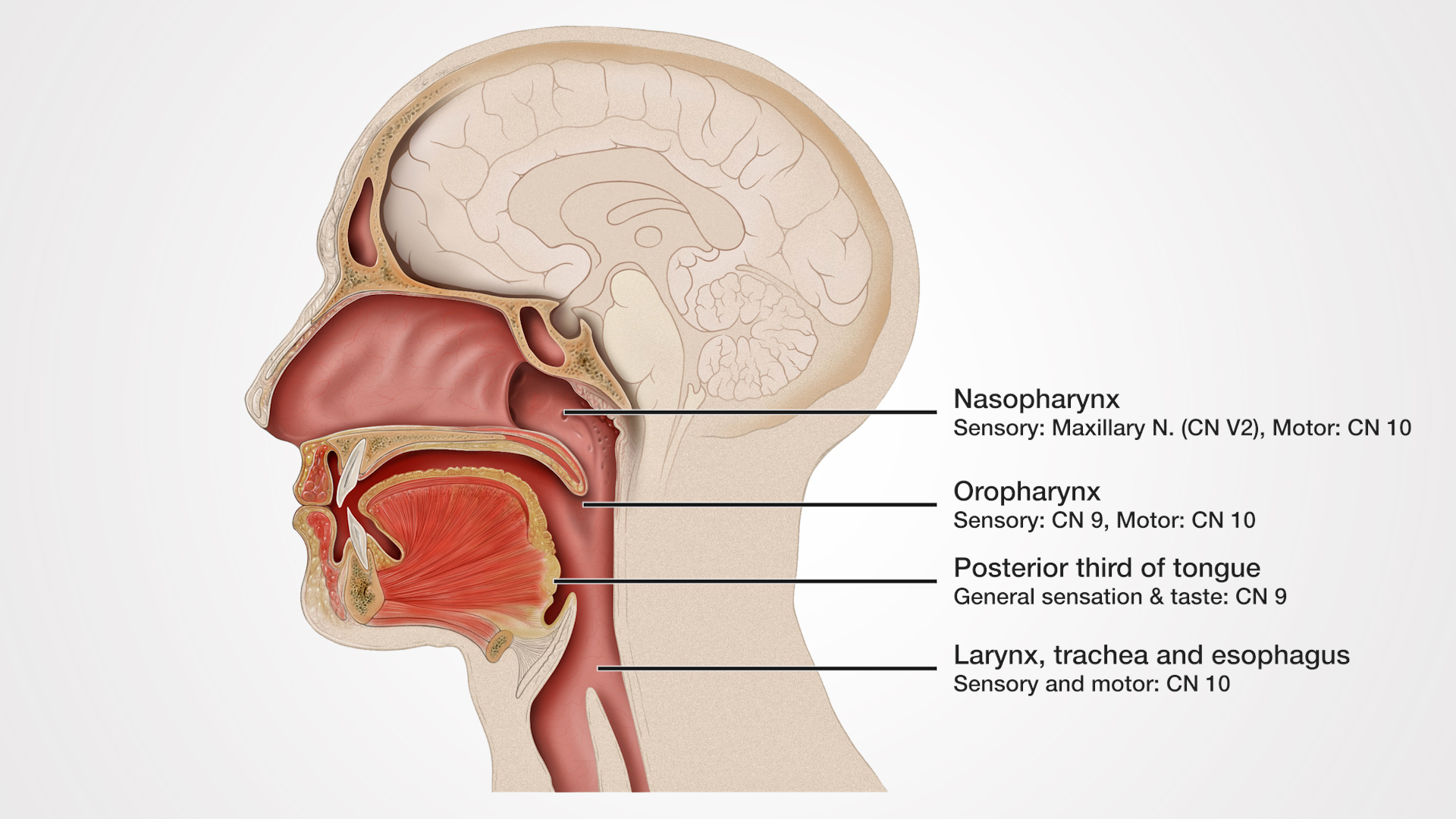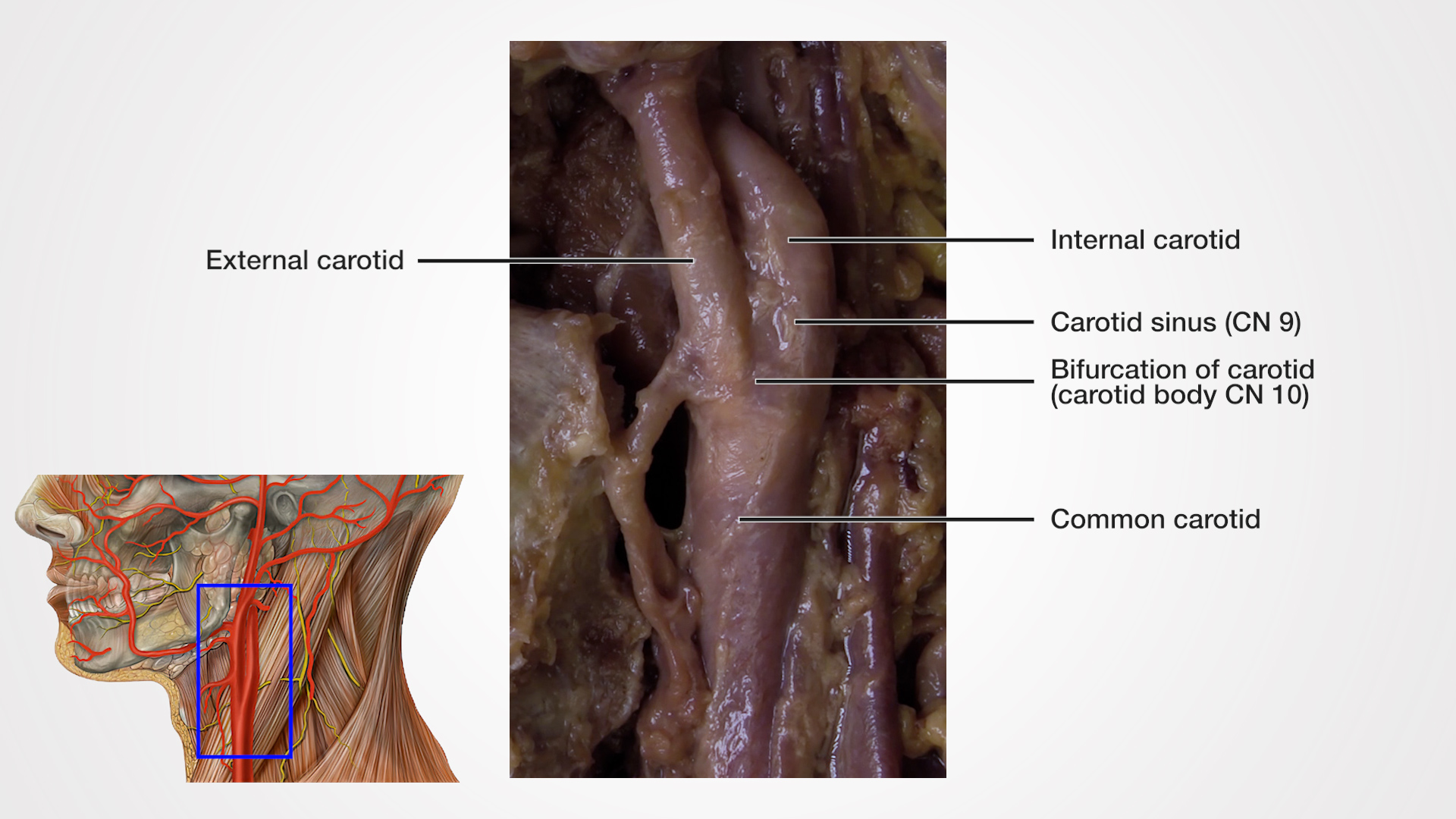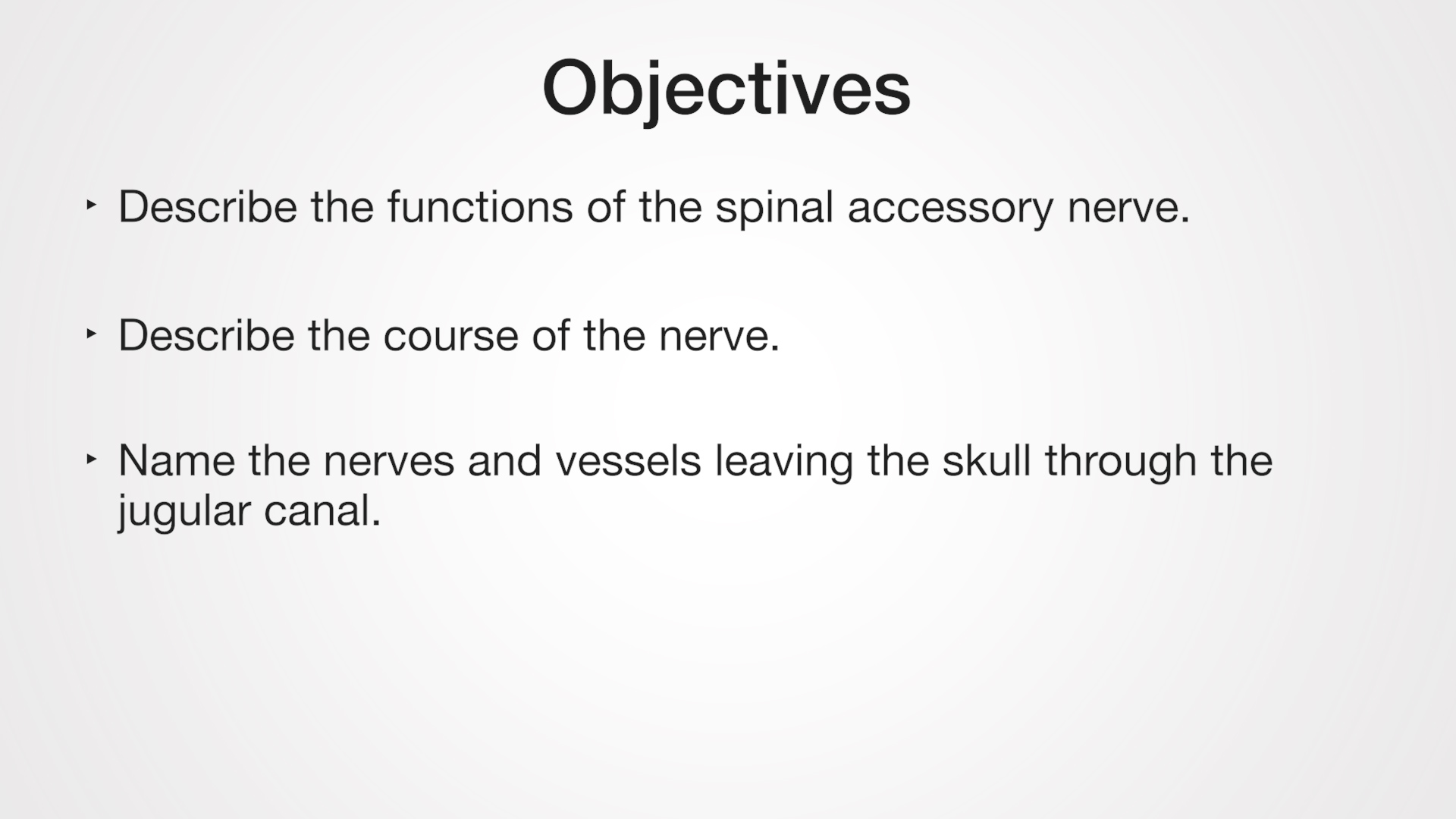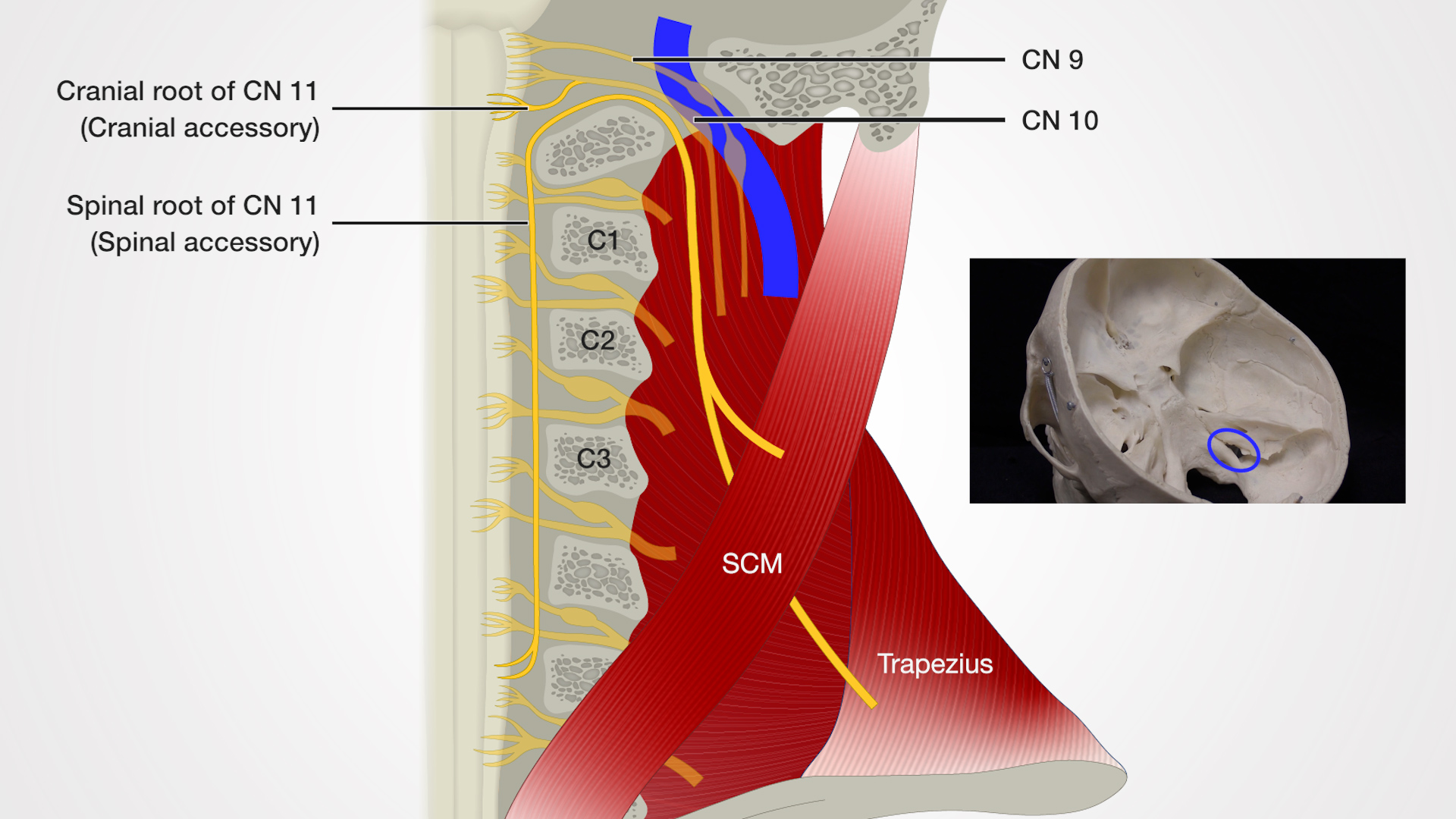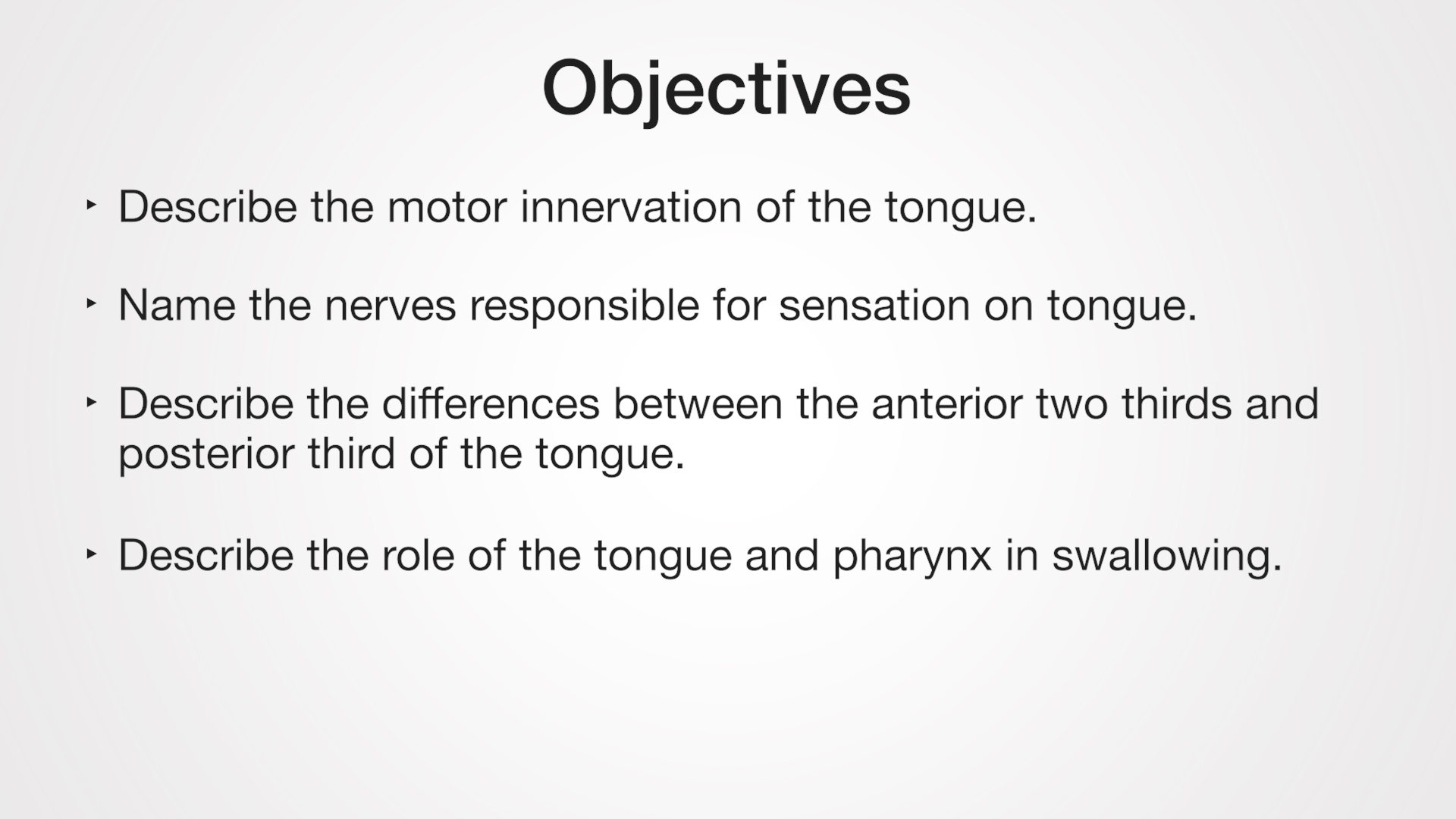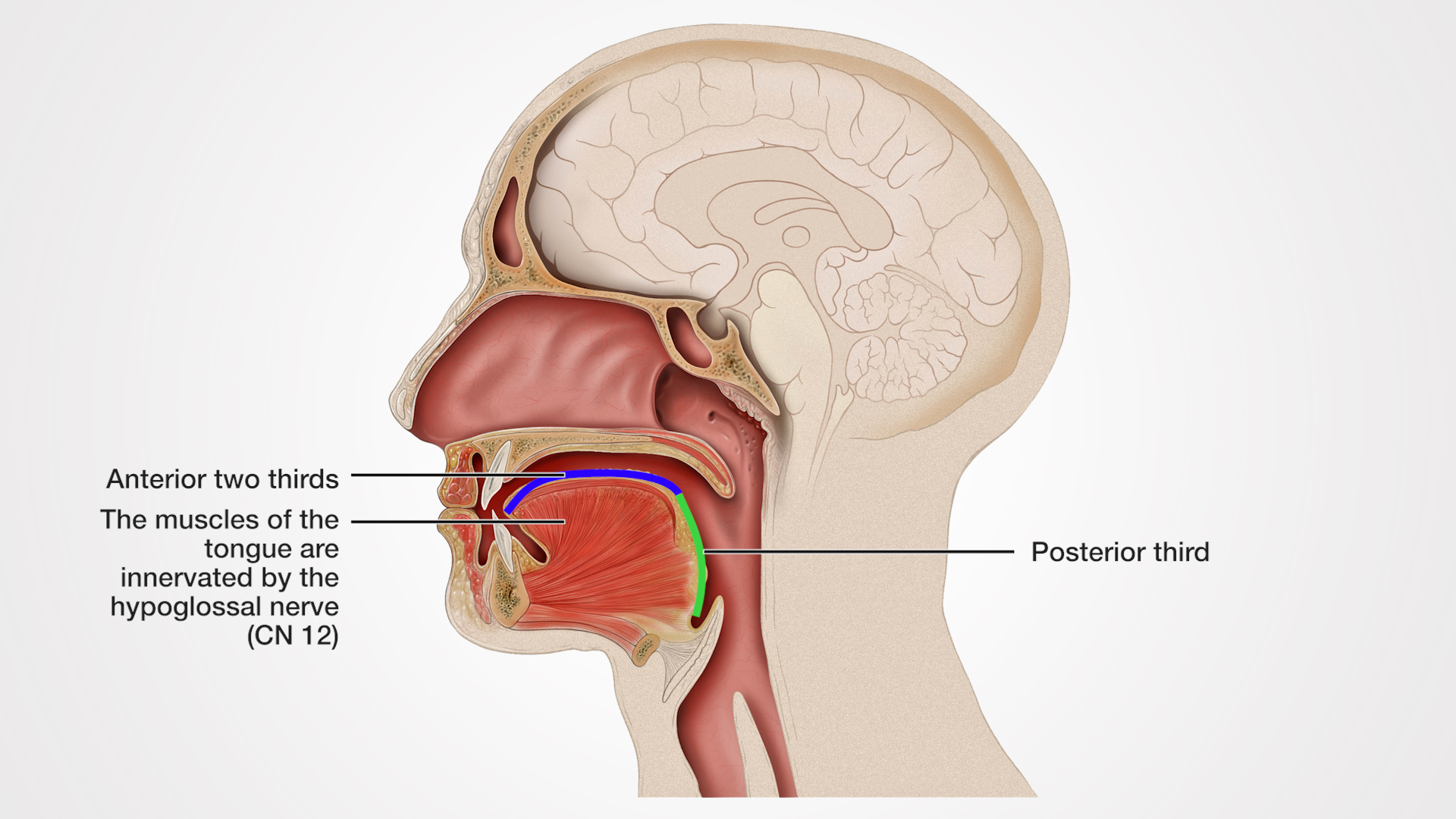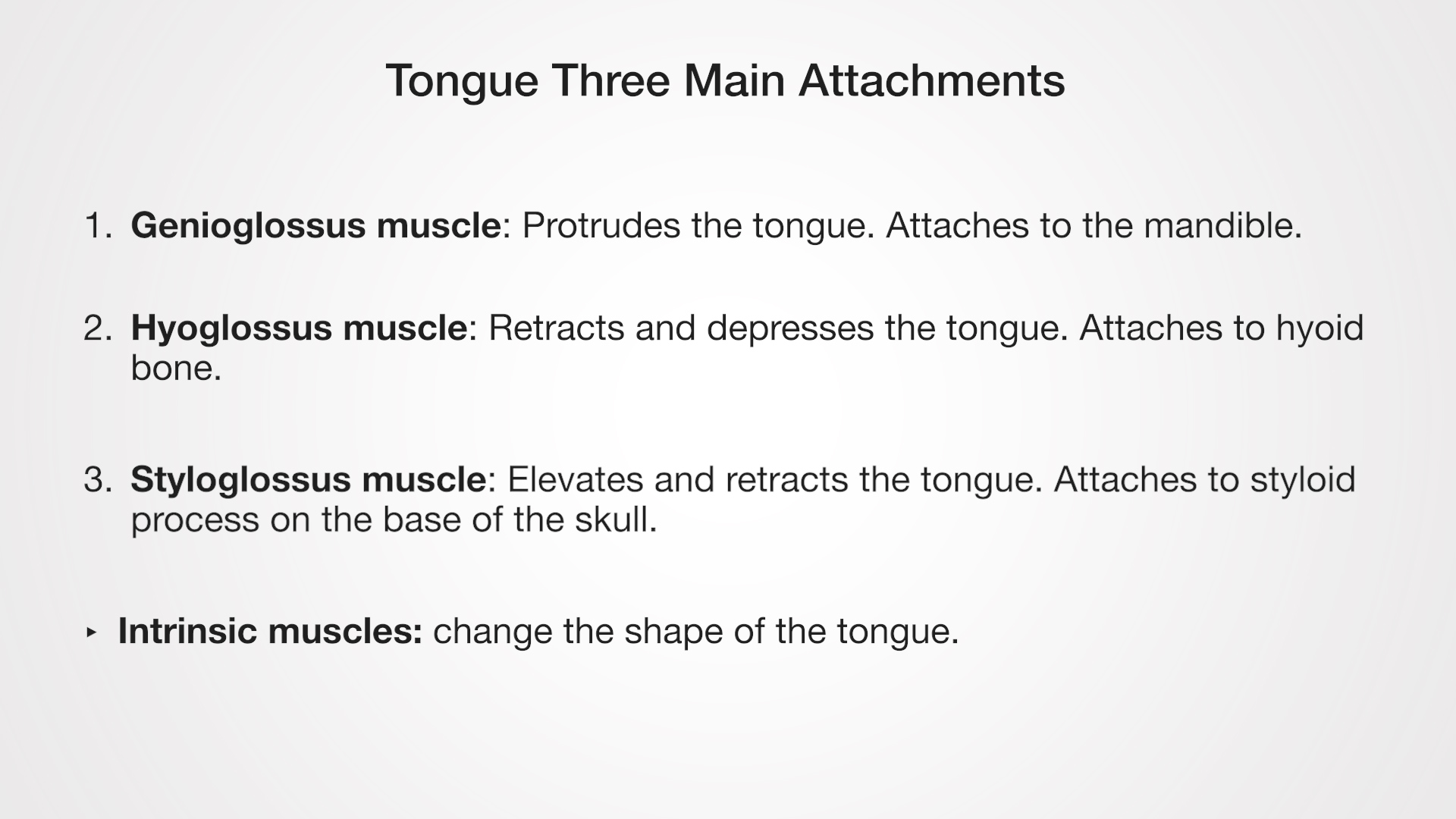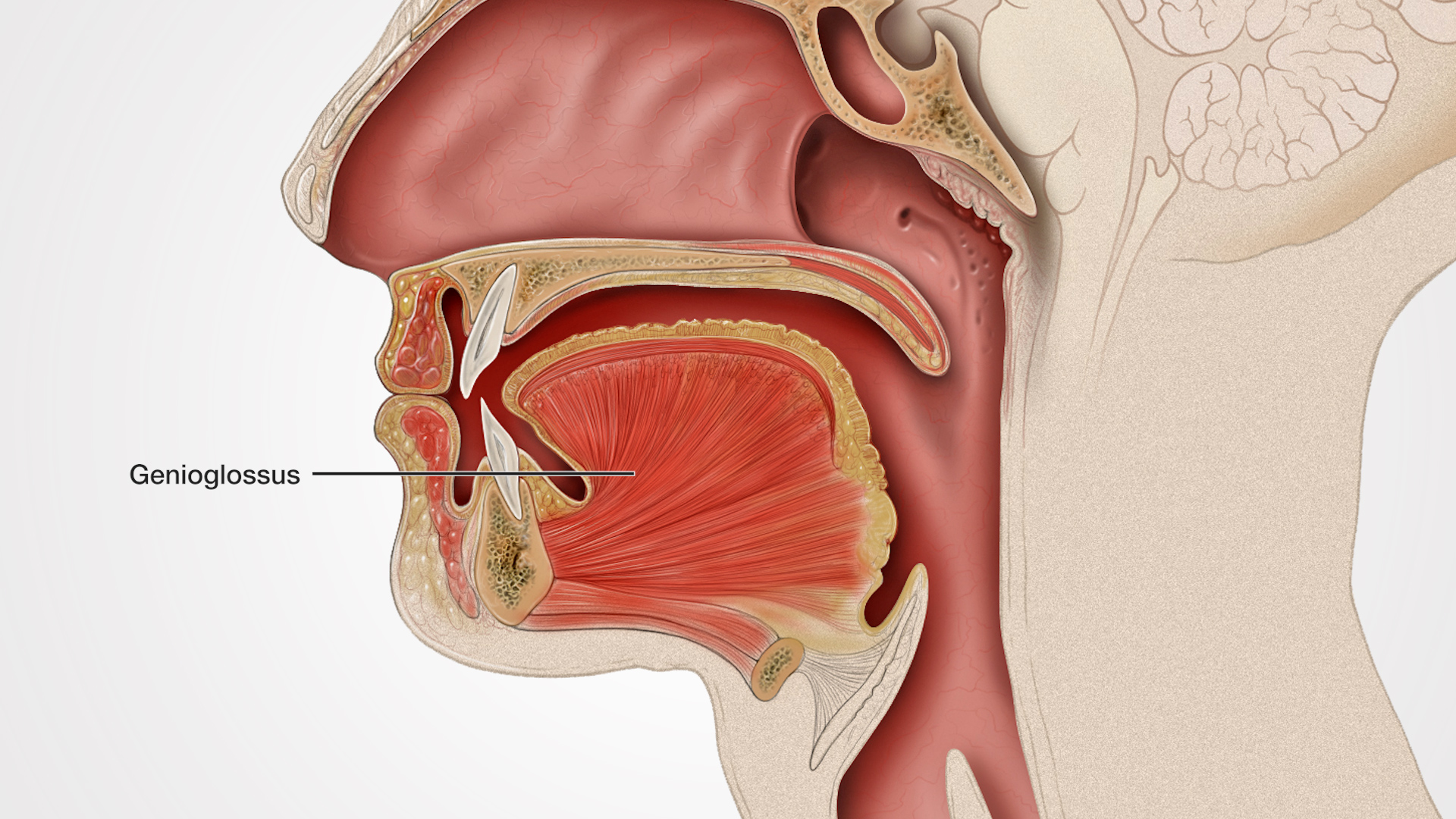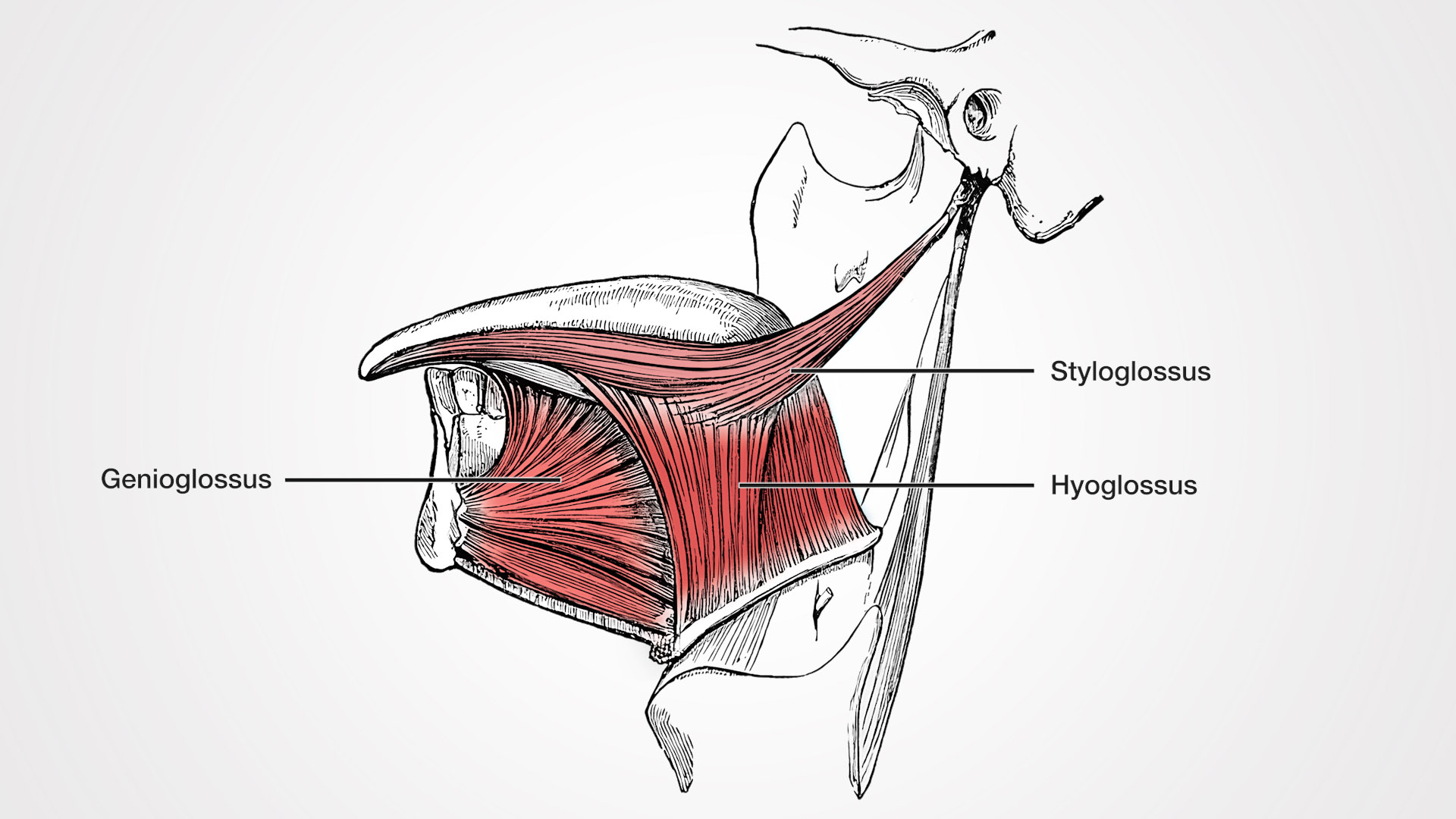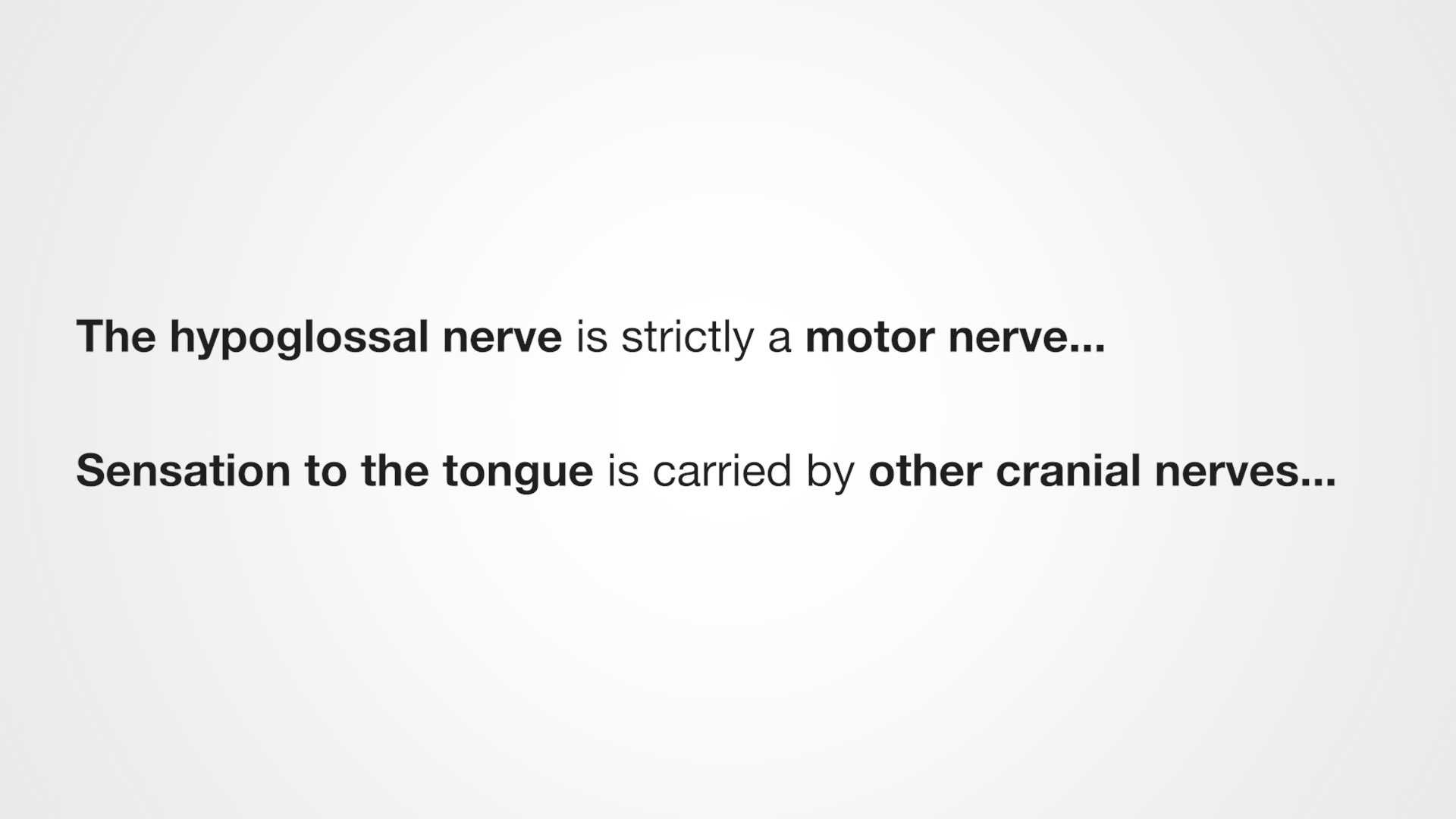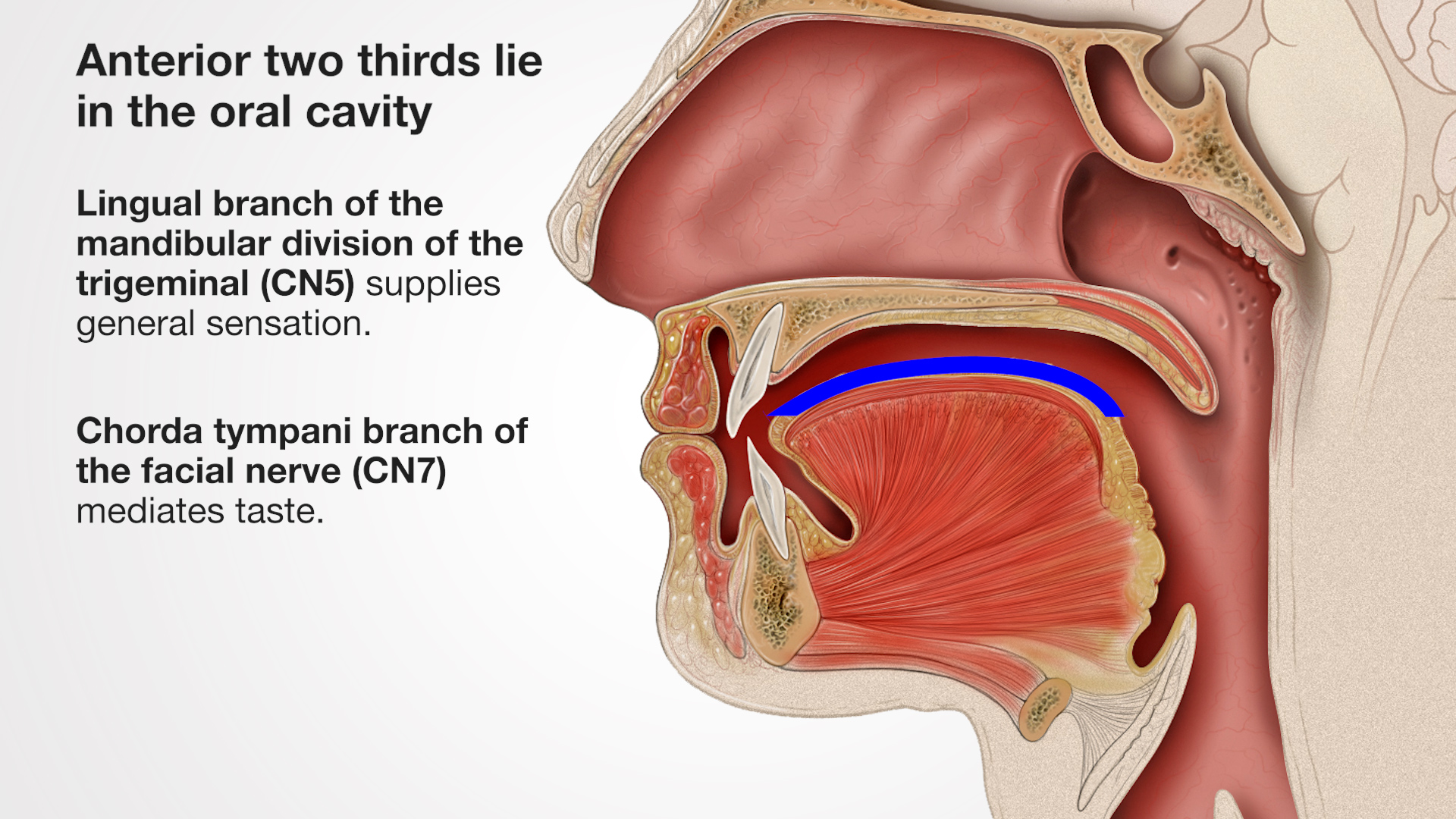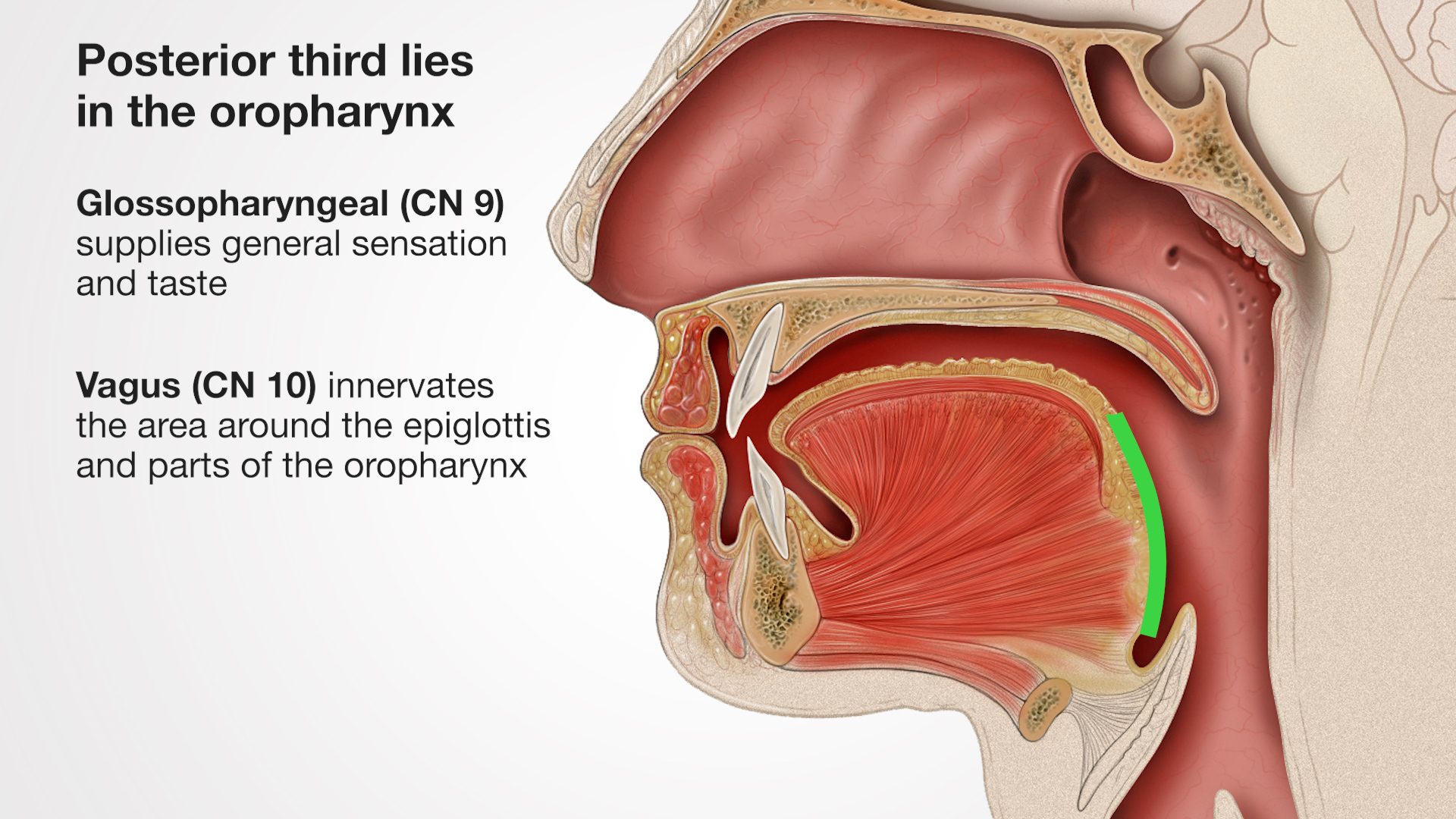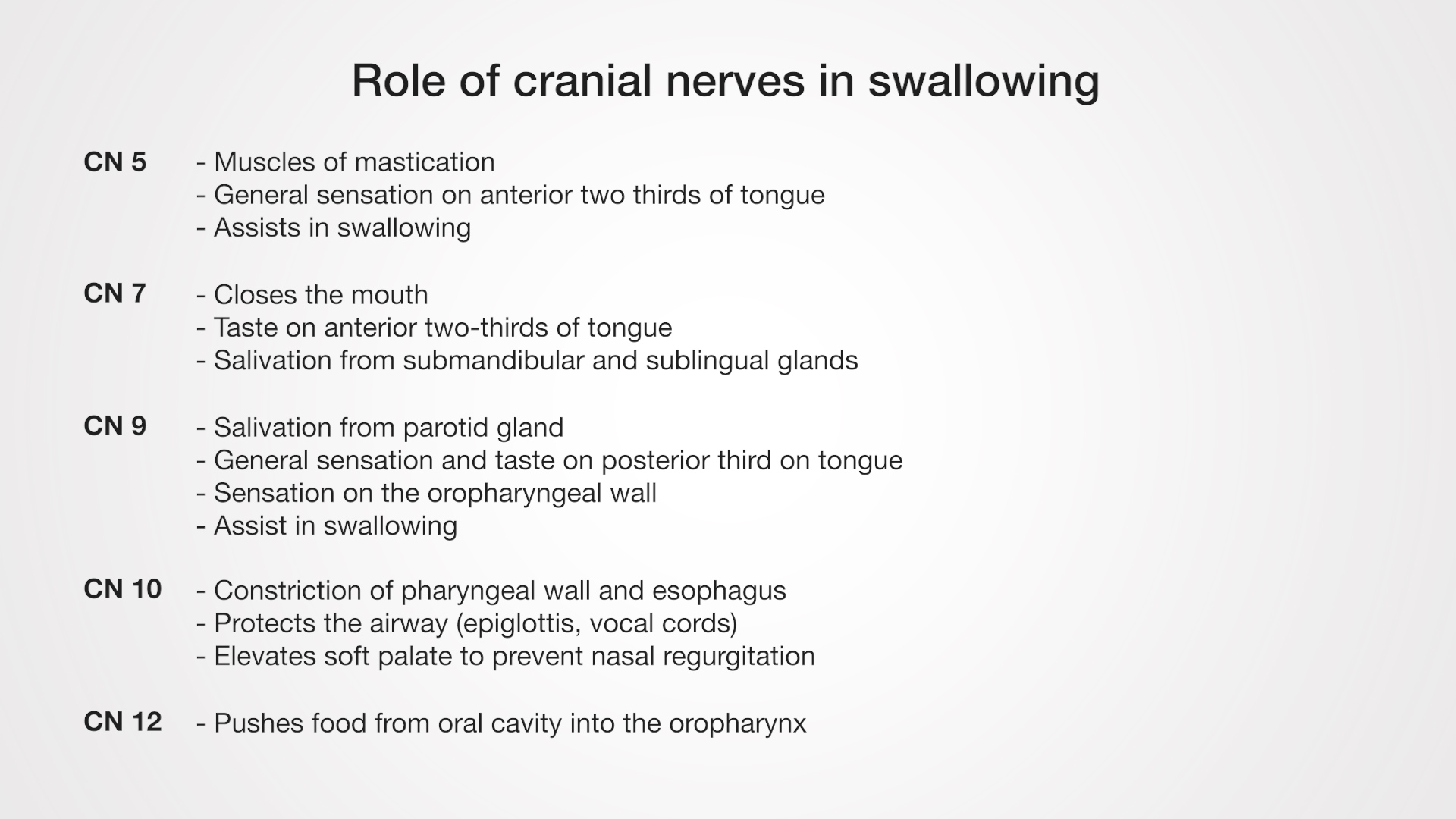Cranial Nerves Introduction
Lab Objectives
- Describe how cranial nerves differ from spinal nerves.
- Describe how the olfactory and optic nerves differ from the other cranial nerves.
- Explain the significance of examination of the retina.
- Define the terms “optic nerve” and “optic tract”
- Name the thalamic relay and the location of the primary visual cortex.
- Explain the significance of the optic chiasm and the optic radiations.
- Describe the difference between the pathways of the medial and lateral halves of the retina.
- Describe the deficits resulting from injury to the visual pathway at several locations.
- Name the muscles controlling eye movements and their innervation and actions.
- Describe the pupillary light reflex.
- Name the three divisions of the trigeminal nerve.
- Describe the sensory distribution of each division.
- Describe the motor distribution of the trigeminal nerve.
- Name the main functions of the facial nerve (CN 7).
- Describe the role of the trigeminal nerve in distribution of components of the facial nerve.
- Describe the role of nerves involved in a corneal blink reflex.
- Be able to describe the location of the vestibular and cochlear apparatus.
- Describe the function of the vestibular and cochlear apparatus.
- Discuss the consequences of damage to the vestibular and auditory divisions.
- Describe the functions of the glossopharyngeal nerve.
- Name the functions of the vagus nerve.
- Describe the role of these nerves in the gag reflex.
- Describe the functions of the spinal accessory nerve.
- Describe the course of the nerve.
- Name the nerves and vessels leaving the skull through the jugular canal.
- Describe the motor innervation of the tongue.
- Name the nerves responsible for sensation on tongue.
- Describe the differences between the anterior two thirds and posterior third of the tongue.
- Describe the role of the tongue and pharynx in swallowing.
Lecture List
Olfactory (CN 1) and Optic (CN 2), Optic Nerve (CN 2), Optic Nerve (Cont.), Eye Movements and Pupillary Response, Trigeminal (CN 5), Facial Nerve (CN 7), Auditory/Vestibulocochlear (CN 8), Glossopharyngeal (CN 9) and Vagus (CN 10), Accessory Nerve (CN 11), Hypoglossal Nerve (CN 12)
